
Saint-Saëns Organ Symphony 2022/2023 SEASON October 7 – 8, 2022
Completely
“Expanding my curiosity about lifeis what it’s all about.”
An award-winning
Fe,

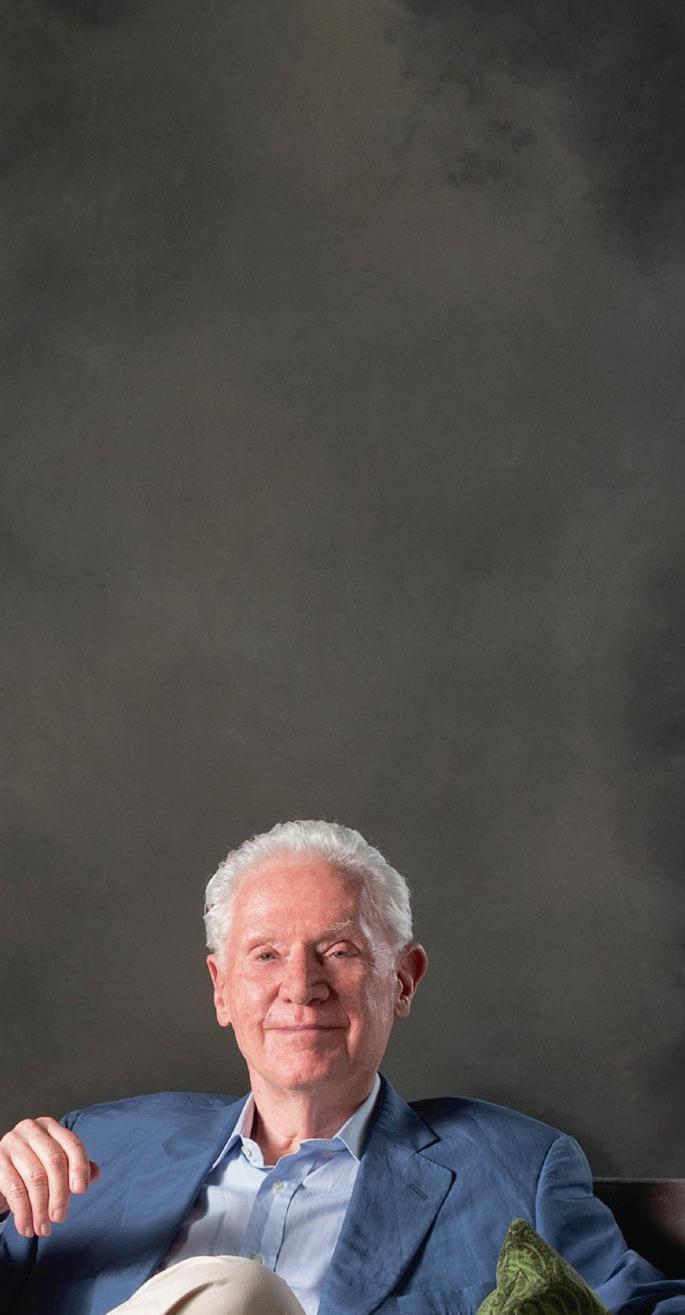
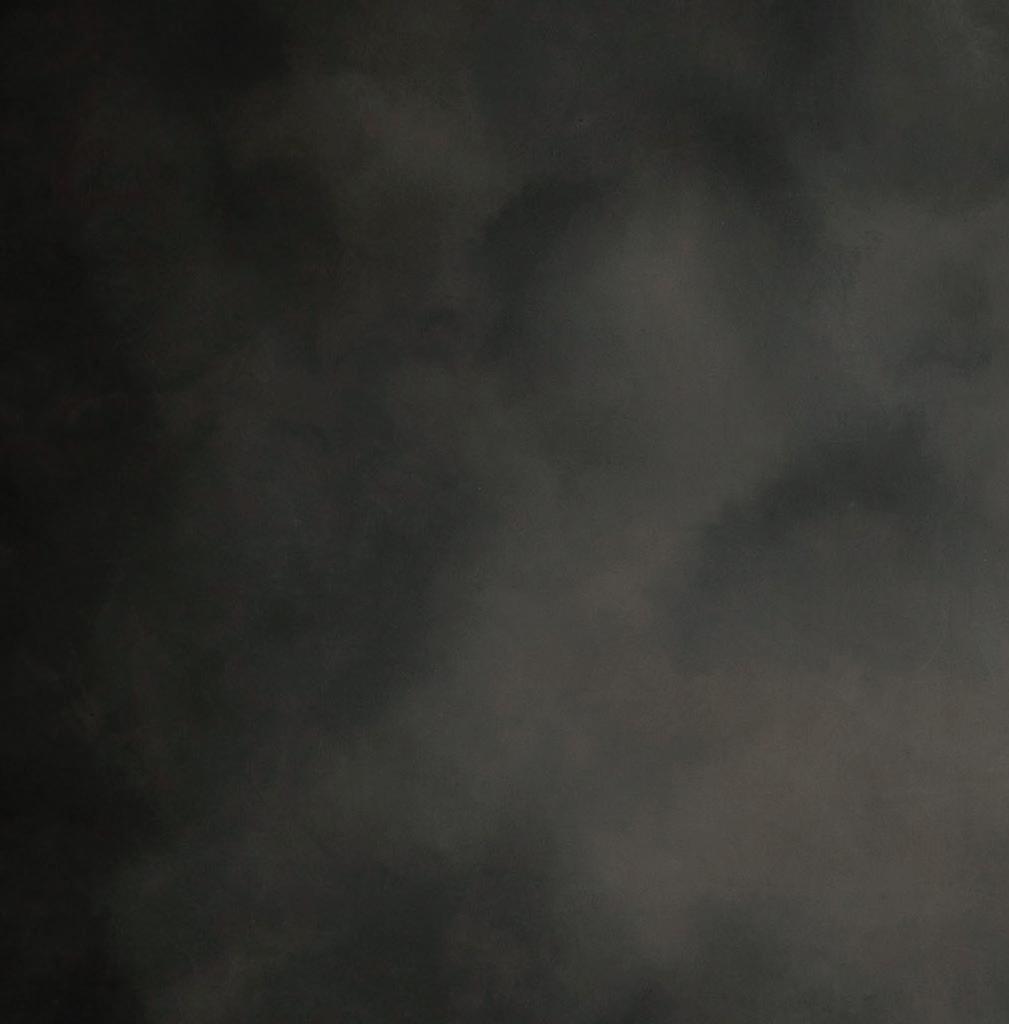
New

who has
in Paris,
in July 2020
the suggestion of a fellow resident. He’s been delighted ever since.
a writer, I enjoy spending time alone, and these surroundings are perfect:
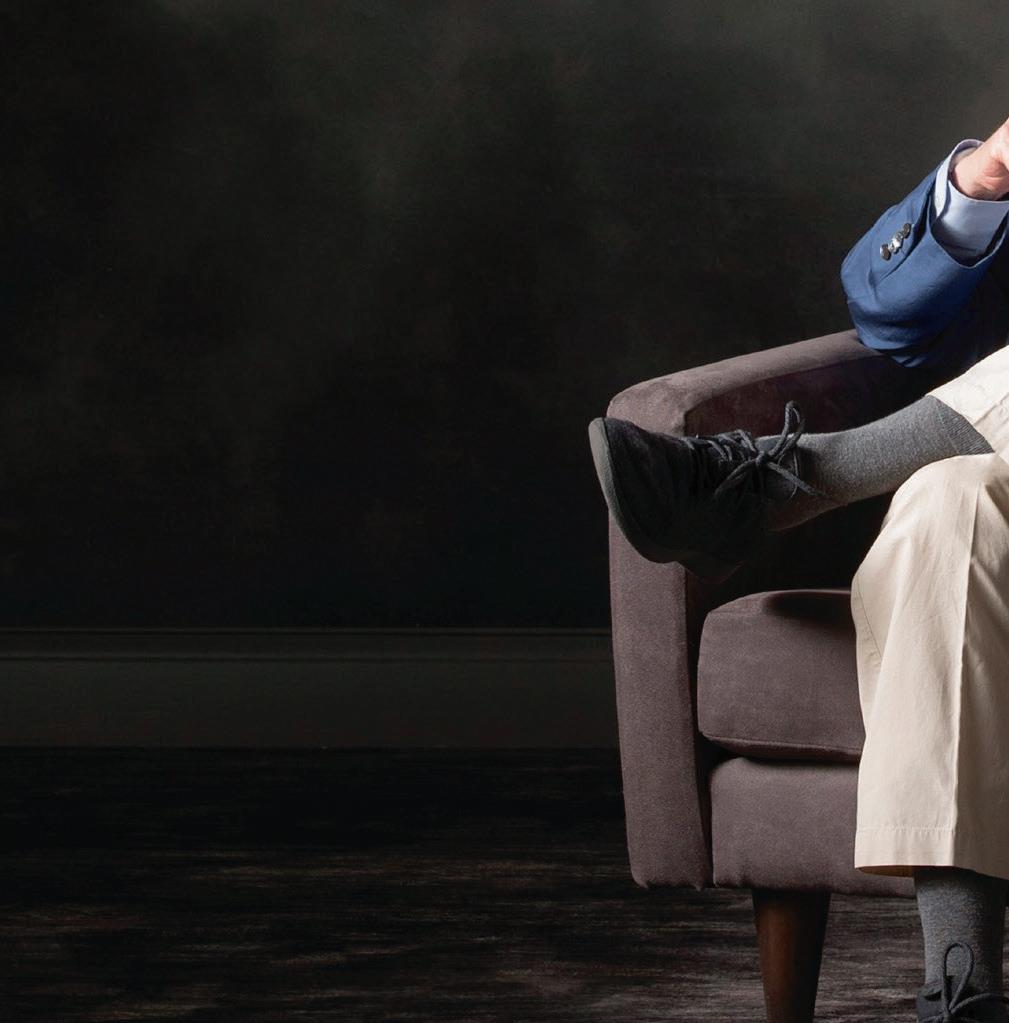
apartment is quiet, and the views
the Cleveland Museum of Art are lovely. But by far the best part of Judson is the people. Everyone is so knowledgeable about art and culture. I wanted to have stimulating company to spend
time with, and I’ve found that here. These are wonderful,
Judson Park
Cleveland
Heights
| Judson Manor University Circle | South Franklin Circle Chagrin Falls Learn more about how Judson can bring your retirement years to life! judsonsmartliving.org | 216.446.1579
engaged. That’s how Joe Coyle feels about his life at Judson Manor.
journalist
lived
Santa
and
York City, he arrived
via
“As
my
overlooking
my
interesting people,” says Joe. Read the full story at judsonsmartliving.org/blog Joe Coyle
2022/2023 SEASON
JACK, JOSEPH AND MORTON MANDEL CONCERT HALL AT SEVERANCE MUSIC CENTER
Saint-Saëns Organ Symphony
Friday, October 7, 2022, at 7:30 p.m. Saturday, October 8, 2022, at 8:00 p.m. Pierre Boulez (1925–2016)
Thierry Fischer, conductor
Notations 15 minutes
I. Modéré: Fantasque
VII. Hiératique: Lent IV. Rythmique
III. Très modéré
Igor Stravinsky (1882–1971)
II. Très vif: Strident Violin Concerto in D major 20 minutes
I. Toccata
II. Aria I III. Aria II IV. Capriccio Vilde Frang, violin
Camille Saint-Saëns (1835–1921)
INTERMISSION 20 minutes Symphony No. 3 (“Organ”) 35 minutes in C minor, Opus 78
I. Adagio — Allegro moderato — Poco adagio
II. Allegro moderato — Presto — Maestoso Todd Wilson, organ
time: 1 hour 35 minutes
clevelandorchestra.com THE CLEVELAND ORCHESTRA
2022/2023 Season Sponsor Approximate running
COVER: PHOTO ROGER MASTROIANNI Thank you for silencing your electronic devices.
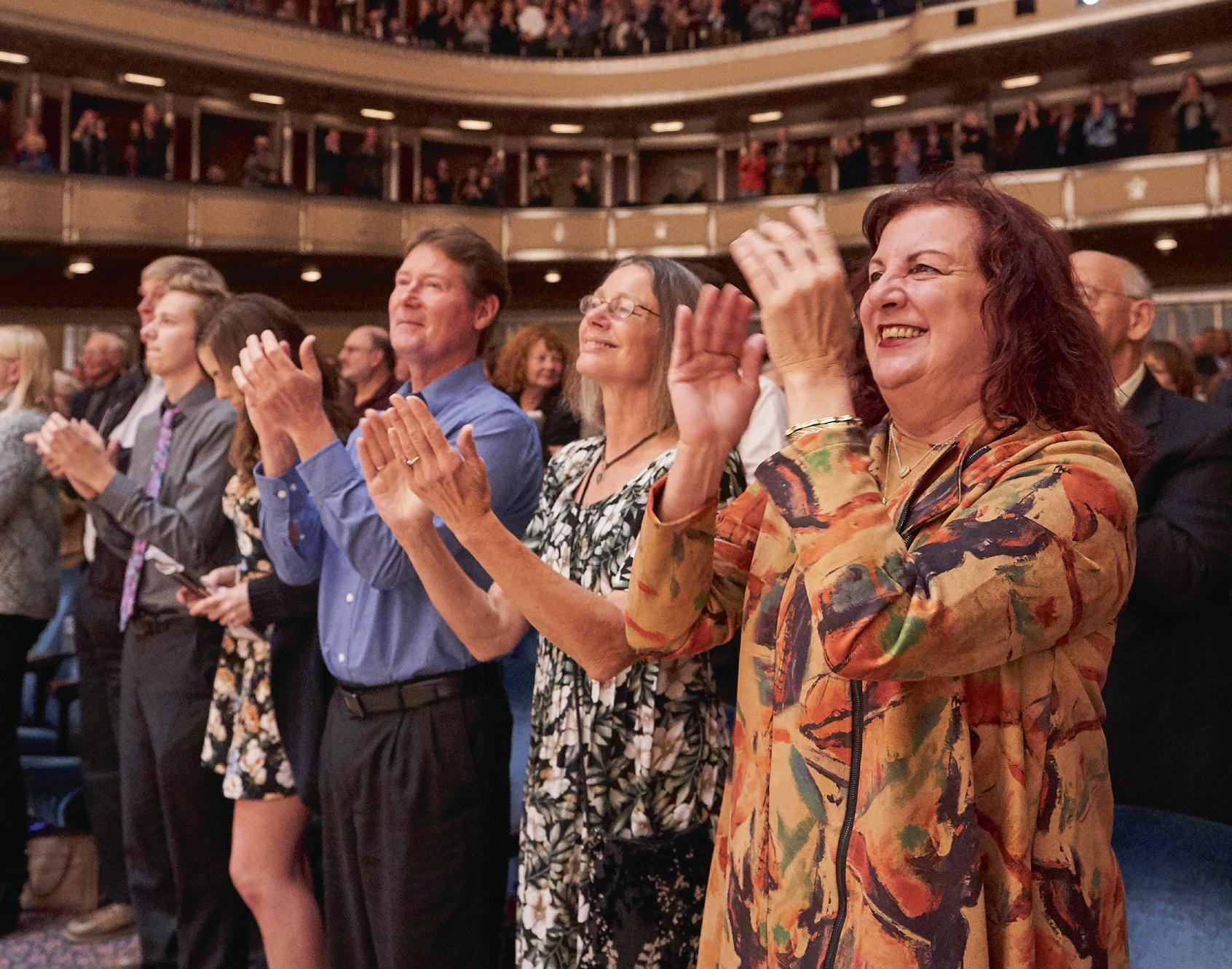
Thank you, supporters! Your ongoing generosity brings the magic to our stage. We are so delighted to welcome you back to Severance for another beautiful season! Thank you for making the 2022/23 Classical Season possible. You keep the music playing, and we are so grateful. To learn more and join the Orchestra’s donor family, visit: clevelandorchestra.com/give Scan me!
DON HUNSTEIN
“The artists I admire... have not followed tradition but have been able to force tradition to follow them. We need to restore the spirit of irreverence in music.”
— Pierre Boulez
THE IRREVERENT AND INNOVATIVE SPIRIT of Pierre Boulez, who made his American debut in Cleveland in 1965 and maintained a close relationship to the Orchestra for the rest of his life, runs through the three works on this weekend’s concerts, led by guest conductor Thierry Fischer
They open with Boulez’s own Notations, a decades-long exercise in invention and reinvention that began in 1945 when the 20-year-old composer wrote a series of 12 short piano pieces, also titled Notations. These musical ideas would be a continual source of fascination for him throughout the rest of his life, an origin point for com plex new arrangements and compositions. Five of these orchestral Notations, dating from 1980 to 1999, are presented tonight. Never one to shy away from irreverence, Igor Stravinsky was unpredictably ambivalent about writing a concerto for violin, which he did not play, when his publisher made the suggestion. Yet fellow composer Paul Hindemith, a noted string player, offered that his unfamiliarity with the instrument “would give rise to ideas which would not be suggested by the familiar movement of the fingers.” Rising Norwegian violinist Vilde Frang makes her Severance debut in this unconventional concerto that combines Baroque forms with 20th-century rhythms and dissonances for a totally original piece.

This brings us to the final work on the program, Camille Saint-Saëns’s pathbreaking “Organ” Symphony. With this work, the composer established a new symphonic tradition in France, paving the way for works by composers Franck, d’Indy, and Dukas. Its theme of death and rebirth also inspired a next generation of composers, including Gustav Mahler (in his “Resurrection” Symphony) and Richard Strauss (his tone poem Death and Transfiguration).
Angel
THE CLEVELAND ORCHESTRA | 3clevelandorchestra.comPHOTO BY
— Amanda
INTRODUCTION
Pierre Boulez (right) made his American debut with The Cleveland Orchestra at the invitation of George Szell in 1965. He later served as principal guest conductor as well as music advisor to the Orchestra.
Notations
By Pierre Boulez
BORN : March 26, 1925, in Montbrison, France
DIED : January 5, 2016, in Baden-Baden, Germany
Ω COMPOSED : 1944–45 (originally 12 short pieces for solo piano), Boulez returned to Notation I, II, III, and IV in 1978, 1984, and 1987. Notation VII was premiered in 1997.
Ω
ORCHESTRATION: 4 flutes (4th doubling piccolo), 3 oboes, english horn, 3 clarinets, E-flat clarinet, bass clarinet, 3 bassoons, contrabassoon, 6 horns, 4 trumpets, 4 trombones, tuba, timpani, percussion (xylophone, vibraphone, glass chimes, bells, glockenspiel, snare drum, claves, cymbalettes, triangle, crotales, maracas, sizzle cymbal, bell tree, cymbals, bongos, bass drum, tam-tam, gong, cowbell), 3 harps, piano, celeste, and strings
Ω
DURATION: about 15 minutes
THROUGHOUT HIS LONG LIFE , Pierre Boulez — composer, conductor, writer, public figure — was a force in the music world like no other. Early in his career, he formulated a vision about music — a vision according to which music is a product of rigorous thinking and a manifestation of a discipline of the highest order. This vision, to which he adhered with unflagging consistency, was unbroken in its unity of style and
thought: the music is generated entirely from within, and no pre-existent elements from outside sources, whether historical or geographic, have a place in the Boulezian universe.
Nowhere is this self-generating quality of musical material more evident than in Notations, Boulez’s gigantic work-in-progress in which the mature composer revisits one of his earliest efforts, a set of 12 piano miniatures
This vision, to which he adhered with unflagging consistency, was unbroken in its unity of style and thought: the music is generated entirely from within, and no pre-existent elements from outside sources, whether historical or geographic, have a place in the Boulezian universe.
4 | 2022/2023 SEASON
THE MUSIC
completed in 1945 at the age of 20. Those student works reflected the young composer’s intense involvement with the music of Schoenberg and Webern. At the time, Boulez had been studying with Olivier Messiaen for about a year and had just found another influential teacher in the composer-conductor René Leibowitz, who was among the first champions of the Second Viennese School in France. The piano pieces are of Webernian brevity: In fact, each of the 12 pieces is exactly 12 measures long
French composer and conductor Pierre Boulez twice led The Cleveland Orchestra in performances of his Notations, in 1986 and in 2005. He returned to these works throughout his life.
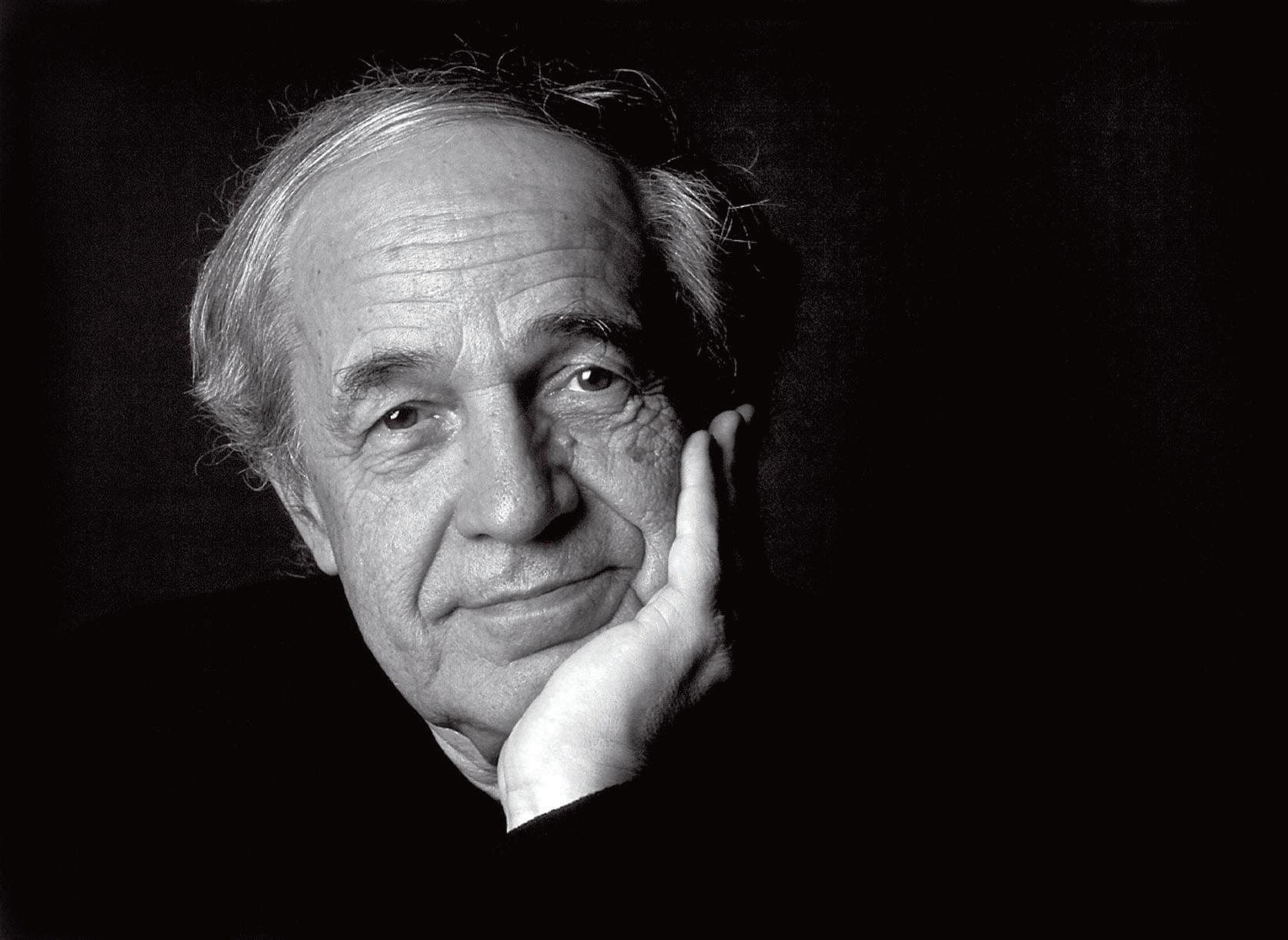
and explores a limited number of musical devices with its strictly circumscribed framework.
Yet, there is always a gap between musical theory and musical practice. Classical harmony, with its tonics and dominants, cannot begin to explain the wonders of Mozart. Similarly, descriptions of Boulez’s music — whether by the composer or someone else — do not do justice to the rhythmic power and coloristic richness of Notations. Nor can the transformation from piano miniature to orchestra work be accounted for in strictly technical terms. Boulez himself invoked Marcel Proust’s handling of memory in his monumental cycle In
THE CLEVELAND ORCHESTRA | 5clevelandorchestra.comPHOTO COURTESY OF THE CLEVELAND ORCHESTRA ARCHIVES
Search of Lost Time. His youthful essays took on new life as they were being reworked — the memory, with its accretions of layers and layers of life experience superimposed on a more modest source, has become a new entity entirely different from the thing remembered.
When Boulez decided that it was time to develop the unrealized potential of these short works, he subjected them to a procedure he later described with a fascinating metaphor:
I read… that in some Egyptian tombs they found corn seeds, and they put these seeds in water and in earth, and the seed produced again. I think that’s a little bit of the process here: the seeds were there, far away, and then I began to conceive these as seeds for new thinking, for new development. And so it began.
The five orchestral Notations will be performed this evening in the order of I, VII, IV, III, and II (the numbers refer to the original piano pieces). Boulez preserved the general characteristics of the individual movements even as he increased them considerably in size. Yet, he essentially composed entirely new music that made use of certain ideas found in the early works. What was schematic and overly direct in 1945 was made more complex and less self-evident in 1978. The number of voices was multiplied to the point where almost every single string player has an individual part to play. There is a huge percussion
battery, producing a tremendous variety of sounds that go infinitely beyond what was envisioned in 1945. Of the first four movements, Notation III was singled out for particularly involved treatment. It has a faster middle section that introduces a definite contrast in mood not present in the original piano piece, though one can see how it derives from a little accompaniment figure that broke loose.
Notation VII, the last of the series to be written, is even more extensive in scope. The unusual movement title, “Hiératique,” translates as sacred and solemn — emphasizing the ceremonial aspect of a religious ritual over the faith that it embodies. In the piano piece, the left hand plays just two intervals in constant alternation: the perfect fifth (B – F-sharp) and the perfect fourth (C – F). Over this simple harmonic foundation, a more complex melodic line unfolds with contrasting speeds, registers, and dynamics. As he prepared the orchestral version, Boulez established each of these contrasting elements as separate components that together determine the evolution of the piece. The initial pair of intervals is present throughout in a multiplicity of guises, whether melodic (horizontal) or harmonic (vertical); thereby imposing a strong unity on the abundance of musical ideas that fill this rich and exciting score.
— Peter Laki
Peter Laki is a musicologist and frequent lecturer on classical music. He is a visiting associate professor at Bard College.
6 | 2022/2023 SEASON THE MUSIC
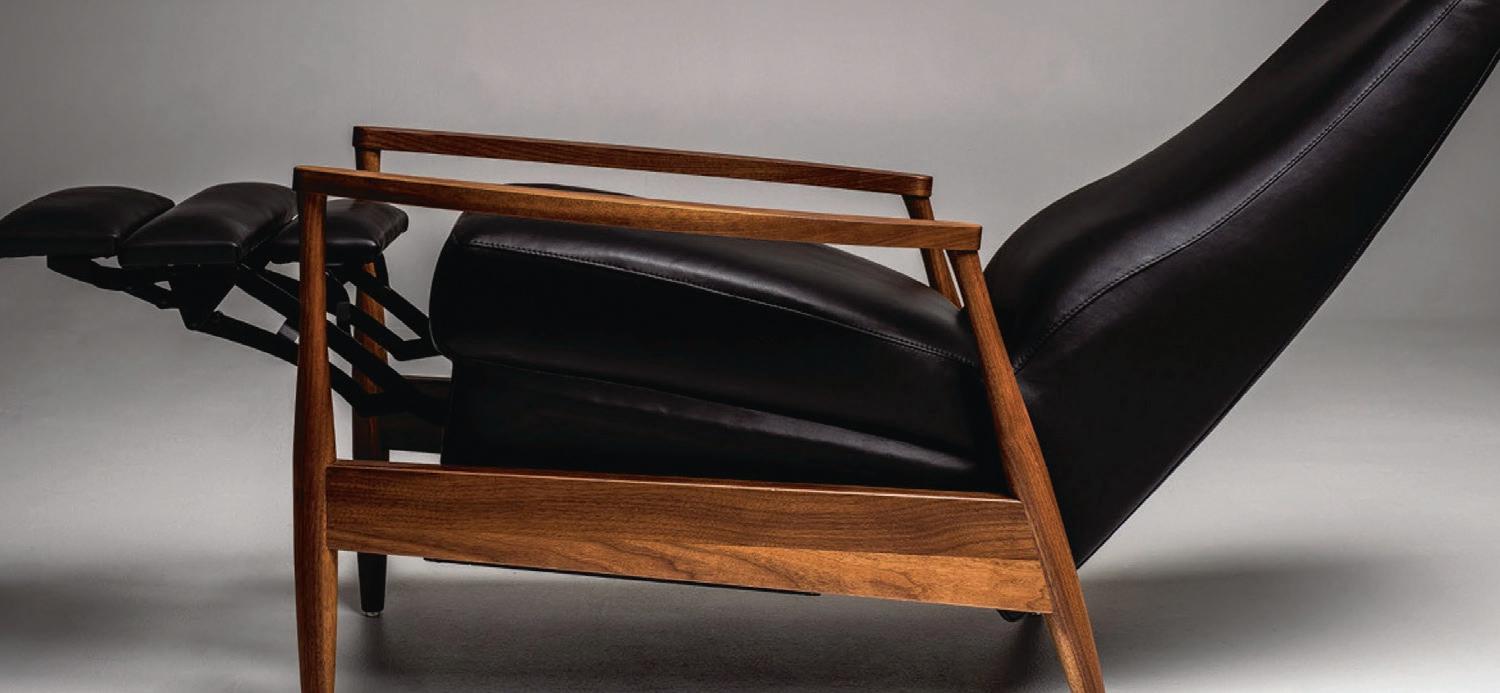

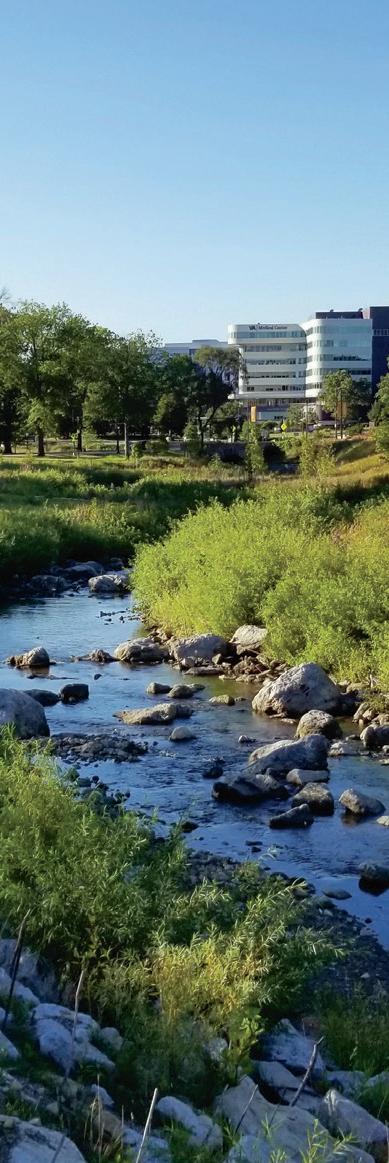
With a 100,000 sq. ft. showroom and 27 galleries, we’re sure you’ll find more than enough room. Need More Leg Room? 34300 Solon Road | Solon, OH | 440-248-2424 | 800-260-2949 One block south of Rt. 422 & SOM Center Road 9-9 M/Th | 9-5:30 Tu/W/F/Sa | www.sedlakinteriors.com Complimentary Delivery and Set-Up Within 60 Miles. CELEBRATING
Violin Concerto in D major
By Igor Stravinsky
BORN : June 17, 1882, in Oranienbaum, near St. Petersburg
DIED : April 6, 1971, in New York City
Ω COMPOSED : 1931
Ω WORLD PREMIERE: October 23, 1931, with the composer conducting the Berlin Radio Orchestra
Ω
CLEVELAND ORCHESTRA PREMIERE: February 1937 with the composer conducing the performance and Samuel Dushkin as soloist. The Orchestra most recently performed the work at Severance in February 2009 with conductor Kirill Petrenko and soloist Gil Shaham.
Ω
ORCHESTRATION: 2 flutes, piccolo, 2 oboes, english horn, 3 clarinets (3rd doubling E-flat clarinet), 3 bassoons (3rd doubling contrabassoon), 4 horns, 3 trumpets, 3 trombones, tuba, timpani, percussion (bass drum), strings, and solo violin
Ω DURATION: about 20 minutes
LATE IN THE YEAR 1930 , Willy Strecker, co-owner and director of Schott and Sons, the prestigious German music publishing house, suggested to Igor Stravinsky that a violin concerto might make a welcome addition to the catalog of his music, and that the violinist Samuel Dushkin was willing to offer technical advice for the project.
The composer was reluctant to accept the proposal. On one hand, he still lacked full confidence in writing for the violin as a solo instrument, despite the challenging part he had included for it in his 1918 theatrical piece The Soldier’s Tale. On the other, he was worried that
Dushkin might be interested only in a virtuoso showpiece, with little concern for the musical niceties inherent in the form. It was the composer Paul Hindemith who reassured him on the first point. He told Stravinsky that his unfamiliarity with the violin might be a benefit since he could apply fresh ideas to the use of the instrument rather than just composing what Hindemith said would be “suggested by the familiar movements of the fingers.” Stravinsky listened to this argument with some attention because Hindemith, in addition to being a master composer and teacher, was also one of the finest string players of his day.
8 | 2022/2023 SEASON THE MUSIC
Before they met, Russian composer Igor Stravinsky (right) was unsure of American violinist Samuel Dushkin (left). Their first meeting, however, proved to be warm and friendly. Their initial contact blossomed into sincere friendship — and the Violin Concerto became the offspring of that mutual admiration. (Photo from the Berlin Philharmonie, October 31, 1931.)
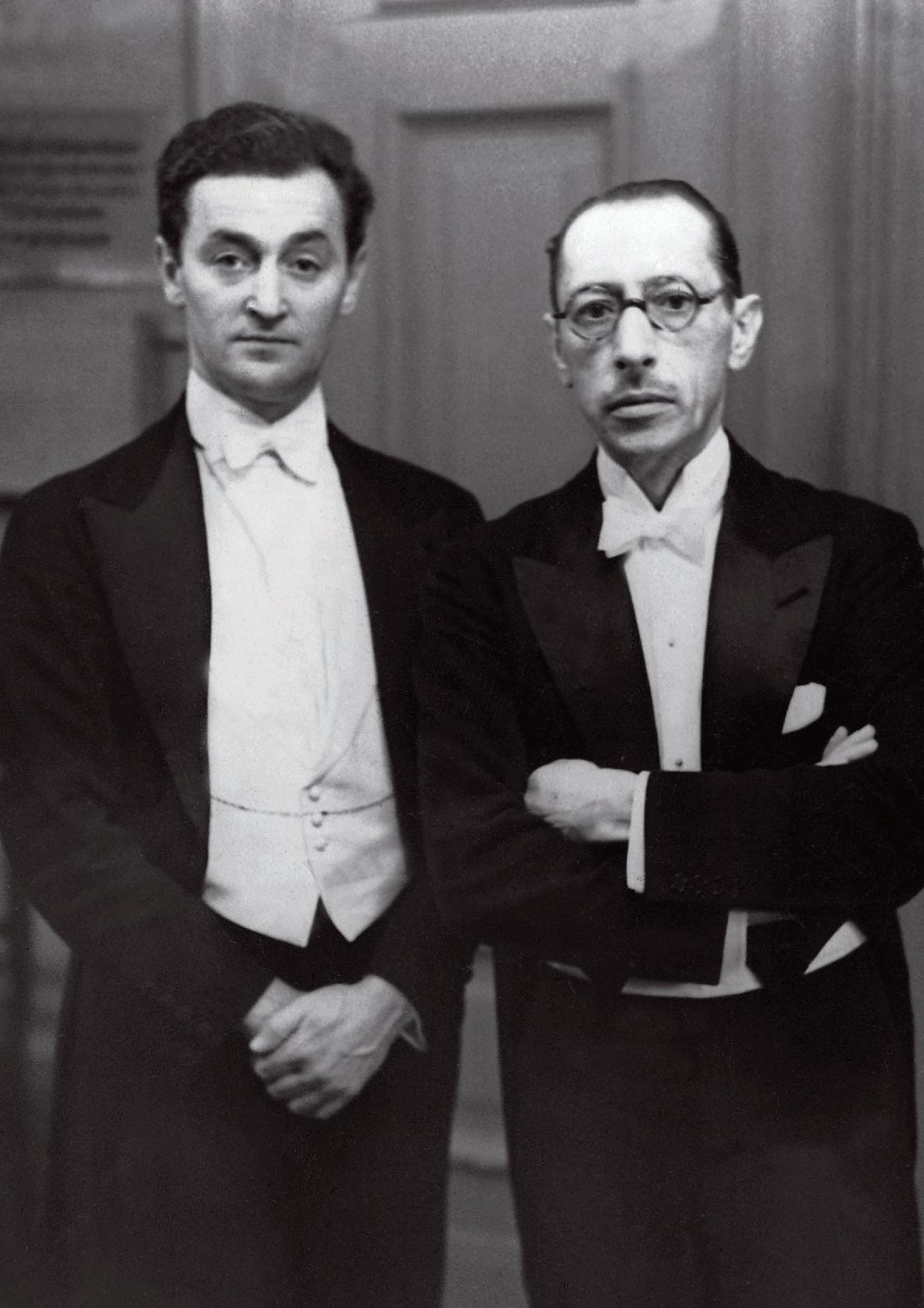
Stravinsky’s second concern was allayed by Dushkin himself. Before they met, Stravinsky thought that Dushkin might be one of those performers interested only in “immediate triumphs… [through] special effects, whose preoccupation naturally influences their taste, their choice of music, and their manner of treating the piece selected.” The first meeting between composer and violinist, however, proved to be warm and friendly. Their initial contact blossomed into sincere friendship — and the Violin Concerto became the offspring of that mutual admiration. Stravinsky dedicated the work to Dushkin.
The concerto opens with a “motto” gesture, a widely spaced chord that Stravinsky called “a passport to the music,” and which returns at important structural junctures throughout the work, most notably at the beginning of each subsequent movement. In his memoirs, Dushkin recalls meeting the composer several months before the concerto’s premiere:
During the winter I saw Stravinsky in Paris quite often. One day when we were lunching in a restaurant, Stravinsky took out a piece of paper and wrote down this chord and asked me if it could be played.
THE CLEVELAND ORCHESTRA | 9clevelandorchestra.comPHOTO: SUEDDEUTSCHE ZEITUNG
PHOTO / ALAMY
STOCK PHOTO
I had never seen a chord with such an enormous stretch, from the “E” to the top “A,” and I said, “No.” Stravinsky said sadly, “Quel dommage” (What a pity). After I got home, I tried it, and, to my astonishment, I found that in that register, the stretch of the eleventh was relatively easy to play, and the sound fascinated me. I telephoned Stravinsky at once to tell him that it could be done. When the concerto was finished, more than six months later, I understood his disappointment when I first said, “No.” This chord, in a different dress, begins each of the four movements. Stravinsky himself calls it his “passport” to that concerto.
The body of the first movement (titled Toccata) begins with a jaunty main theme in a precise rhythm delivered by the trumpets. Contrasting ideas are presented, all wedded together in a transparent texture by the motoric rhythm.

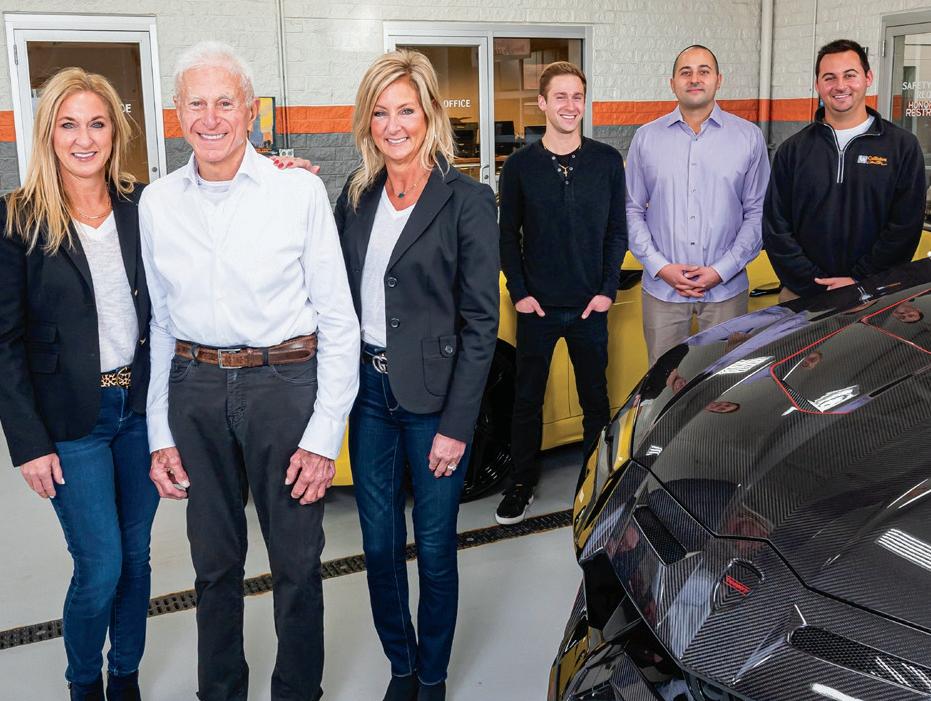
The two subsequent Aria movements (both in three-part, A – B – A form) follow. The first uses an angular melody in its outer sections but turns scherzo-ish for its central portion. The second is slower in tempo and doleful in expression.
The concluding Capriccio movement, a dazzling showpiece for the soloist, despite Stravinsky’s disavowal of virtuoso pyrotechnics, returns the dancing motion of the opening.
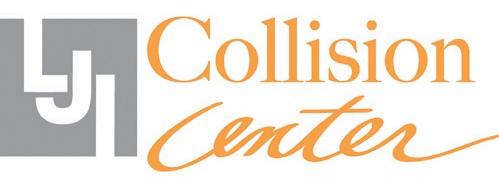 E. Rodda
E. Rodda
THE MUSIC
— Richard
Customer Confidence – Priority One™ Lauren Angie Jill Strauss fourth generation in the industry missionLJI builds confidence in every customer and ensures quality repairs and superior customer service. Our commitment is to achieve and retain customer loyalty for life! 27100 Chagrin Blvd. at I-271 1640 Lee Rd. at Mayfield NOW TWO LOCATIONS LJI builds confidence in every customer and ensures quality repairs and superior customer service. Our commitment is to achieve and retain customer loyalty for life! 27100 Chagrin Blvd. at I-271 Orange Village (216) 1640 Lee Rd. at Mayfield Cleveland Hts. 364-7100 (216) 932-7100 TWO LOCATIONS Customer Confidence – Priority One™ ljicollisioncenter.com
BY RUSSELL LEE
Norton Memorial Organ
The Norton Memorial Organ was custom-designed for Severance Hall and symphonic music. It was created by renowned organ builder Ernest M. Skinner in Boston in 1930 and installed for the hall’s opening in February 1931.
The organ is named in memory of former trustees Mr. and Mrs. David Z. Norton, recognizing a contribution from their children — Miriam Norton White, Robert Castle Norton, and Laurence Harper Norton — to build the organ.
Originally installed above the stage, the organ became all but unusable when a stage shell, meant to enhance Severance’s acoustics, was built in 1958, walling off its sound.
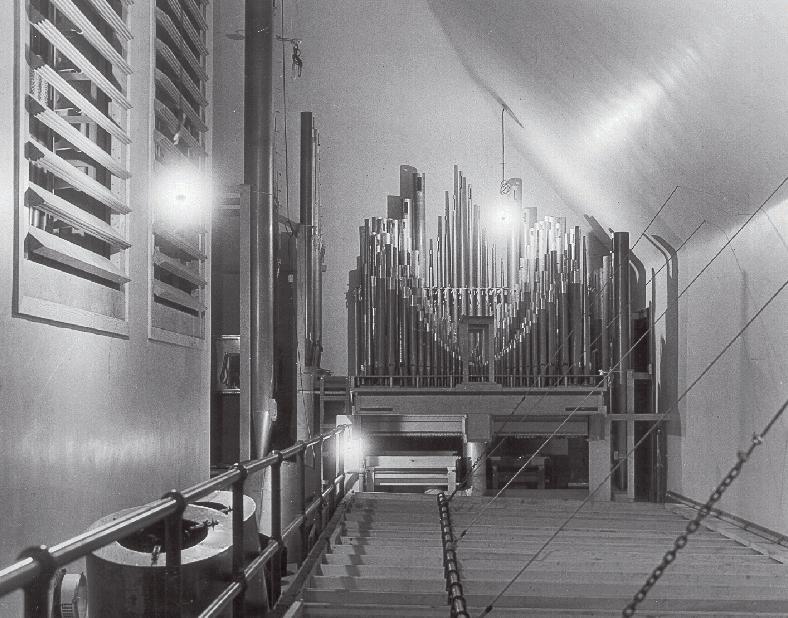
The 94-rank Norton Memorial Organ has 6,025 pipes, ranging in size from 32 feet to about seven inches.

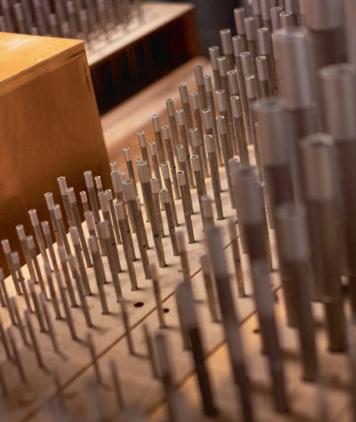
 BY ROGER
BY ROGER
As part of a larger renovation and restoration of Severance (1998–2000), the organ underwent more than two years of restoration and re-fitting by the Schantz Organ Company of Ohio, and it was installed in a new location surrounding the stage. It was first played and rededicated in January 2001.
THE CLEVELAND ORCHESTRA | 11clevelandorchestra.com
TOP: PHOTO
MASTROIANNI RIGHT, INSET DETAIL: PHOTO
Symphony No. 3 (“Organ”) in C minor, Opus 78
By Camille Saint-Saëns
BORN : October 9, 1835, in Paris
DIED : December 16, 1921, in Algiers
Ω COMPOSED : 1886
Ω WORLD PREMIERE: May 19, 1886, with the composer leading the London Philharmonic Society
Ω CLEVELAND ORCHESTRA PREMIERE: the Orchestra first performed Saint-Saëns’s “Organ” Symphony in November 1926, with Nikolai Sokoloff conducting and Edwin Arthur Kraft playing the organ. It was most recently presented in December 2011, led by Marin Alsop and Joela Jones playing the organ.
Ω
ORCHESTRATION: 3 flutes (3rd doubling piccolo), 2 oboes, English horn, 2 clarinets, bass clarinet, 2 bassoons, contrabassoon, 4 horns, 3 trumpets, 3 trombones, tuba, timpani, percussion (cymbals, triangle, bass drum), piano (four hands), organ, and strings
Ω
DURATION: about 35 minutes
WITH HIS THIRD AND LAST SYMPHONY , Camille Saint-Saëns set out to write a masterpiece. At 51, he was — and had long been — one of the most famous musicians in France, equally successful as a composer, conductor, pianist, and organist, having served in this capacity for many years at the Madeleine, one of the landmark churches in Paris. His career started with the unqualified endorsement of such luminaries as Berlioz, Liszt, and Gounod, and he had come to be considered a luminary himself.
At the same time, he had reason to feel that some of his best efforts in the field of composition were not sufficiently appreciated. He had won great acclaim for his concertos and other virtuosic solo pieces. However, his symphonic poems, such as Le Rouet d’Omphale (Omphale’s Spinning-Wheel), met with little enthusi asm in Paris, and his opera Samson and Delilah premiered, thanks only to Liszt’s unflagging support, in Weimar. At home, Saint-Saëns found himself locked in a rivalry with César Franck, his senior
12 | 2022/2023 SEASON THE MUSIC
by 13 years, who wrote some of the best French Romantic instrumental music. Saint-Saëns was antagonized by Franck’s students and was increasingly isolated in the Société nationale de musique (which he had founded), a situation that, soon after the premiere of the Third Symphony, led to his resignation as the society’s president.

Saint-Saëns wanted to make a major statement, and the invitation of the London Philharmonic Society to write a symphony provided just the incentive he needed. In fact, Saint-Saëns had already sketched the work, and before long, he reported that the project was “well under way.” He played parts of his work-in-progress to Liszt, who had been a constant source of encouragement and
influence, when the older man passed through Paris for the last time in his life, in 1885. Saint-Saëns conducted the premiere of his completed symphony in London on May 19, 1886, to a standing ovation. With this concert, Saint-Saëns, who had long been well-known in England, definitively established his popularity there. The symphony proved to be a success in France, as well.
The composer himself wrote the first program note about his symphony, offering a detailed outline of the themes, referring to himself in the third person throughout:
THE CLEVELAND ORCHESTRA | 13clevelandorchestra.com
Camille Saint-Saëns (seated), an accomplished pianist and organist as well as composer, incorporated both keyboard instruments into his Symphony No. 3. (Photo circa 1916)
PHOTO: EVERETT COLLECTION
HISTORICAL / ALAMY STOCK PHOTO
This symphony is divided into two parts, in the manner of Saint-Saëns’s Fourth Piano Concerto and his Sonata for Piano and Violin. It nonetheless includes practically the traditional four movements. The first, checked in development, serves as an introduction to the Adagio. In the same manner, the scherzo is connected with the finale. The composer has thus endeavored to avoid in a certain measure the interminable repetitions that are now more and more disappearing from instrumental music.
The composer thinks that the time has come for the symphony to benefit by the progress of modern instrumentation.
Some of the innovations in orchestral writing in Saint-Saëns’s symphony clearly came from the symphonic poems of his mentor Liszt, who had used the organ in his Hunnenschlacht (Battle of the Huns). Saint-Saëns’s method of motivic transformation also follows Lisztian models to some extent. The four movements are telescoped into two parts, with the opening Allegro and the slow movement constituting the first part, and the scherzo with the finale the second. Moreover, motivic relationships permeate all of the movements so that the entire work is extremely rich in internal connections.
All four movements share a rising four-note motif, which is first heard in the oboe. It reproduces the beginning of the Allegro moderato. Further versions of the basic motif are played
by the trombones and soon afterward by the violins. A second, lyrical idea completes the opening Allegro’s melodic material.
We first hear the organ, for which the symphony is nicknamed, in the Poco adagio, in the first of many extended solos. Its entrance also transforms the initial motif as both as a hymn-like melody and as a fairly conspicuous accompaniment figure.
In the Allegro moderato that opens the symphony’s second half, we hear new variants of our motif, followed by the Trio section, distinguished by fast piano scales as a special orchestral color. A short contrapuntal section based on the first motif serves as a transition to the finale, which begins with the lush sounds of the organ and the piano four hands. The basic idea builds into a solemn chorale and then into a fugue reminiscent of Mozart’s final “Jupiter” Symphony. The work ends with a glorious climax, magnificent and majestic in its effect.
Saint-Saëns was well aware of the symphony’s significance as a supreme achievement in his career. He never attempted to write another symphony; instead, he returned to writing operas, concertos, and chamber music. He wrote about the “Organ” Symphony in later years: “I have given all that I had to give. What I have done I shall never do again.”
— Peter Laki
Peter Laki is a musicologist and frequent lecturer on classical music. He is a visiting associate professor at Bard College.
14 | 2022/2023 SEASON THE MUSIC
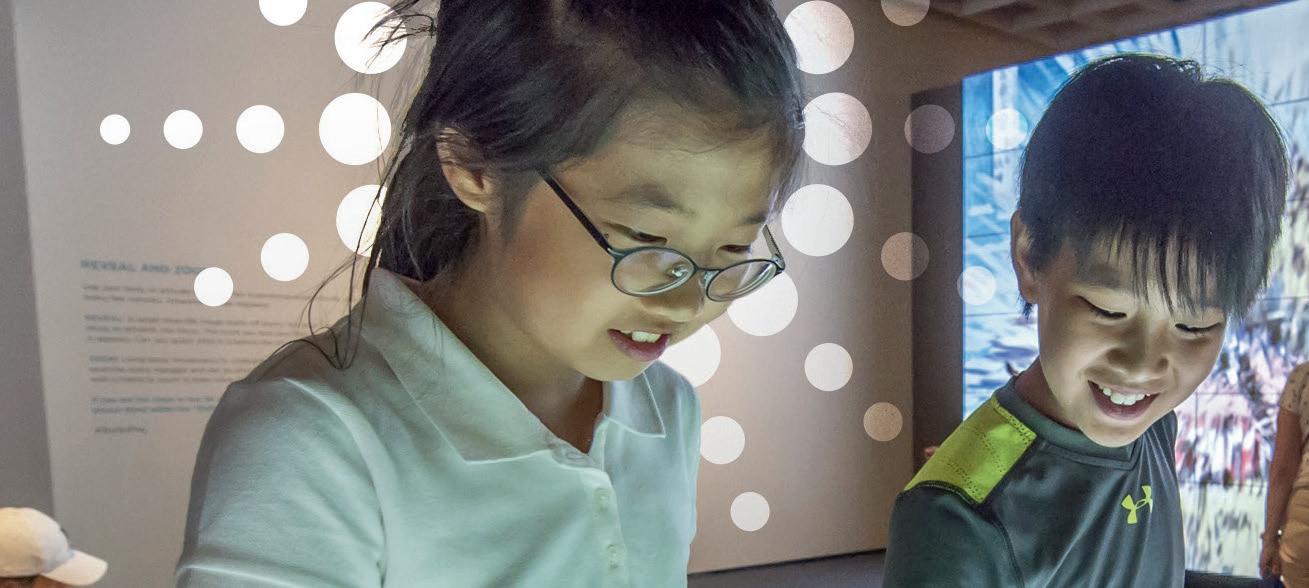





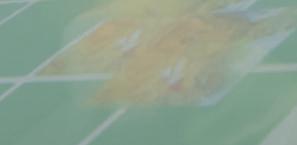
















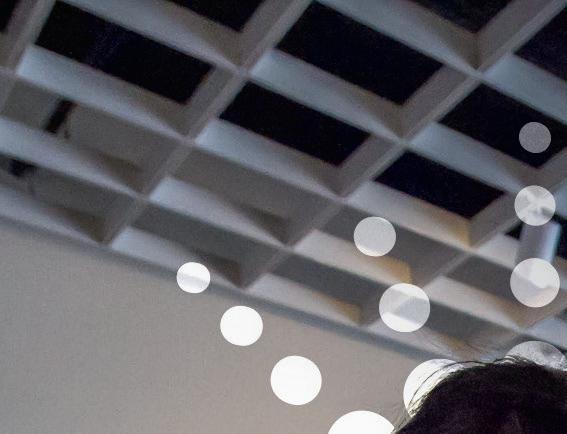


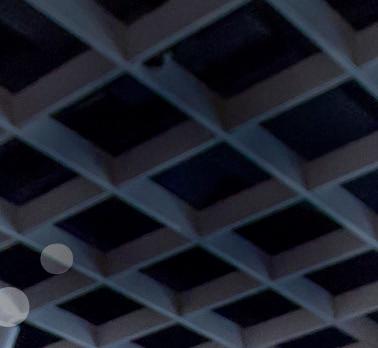
IF YOU’RE LOOKING TO E P L O R E ON L I NEClevelandArtsEvents .com connects you to the region’s vibrant arts and culture scene. With just a few clicks, discover hundreds of events made possible in part with public funding from Cuyahoga Arts & Culture. get in touch with art. ARTLENS Gallery | The Cleveland Museum of Art IMAGE COURTESY OF
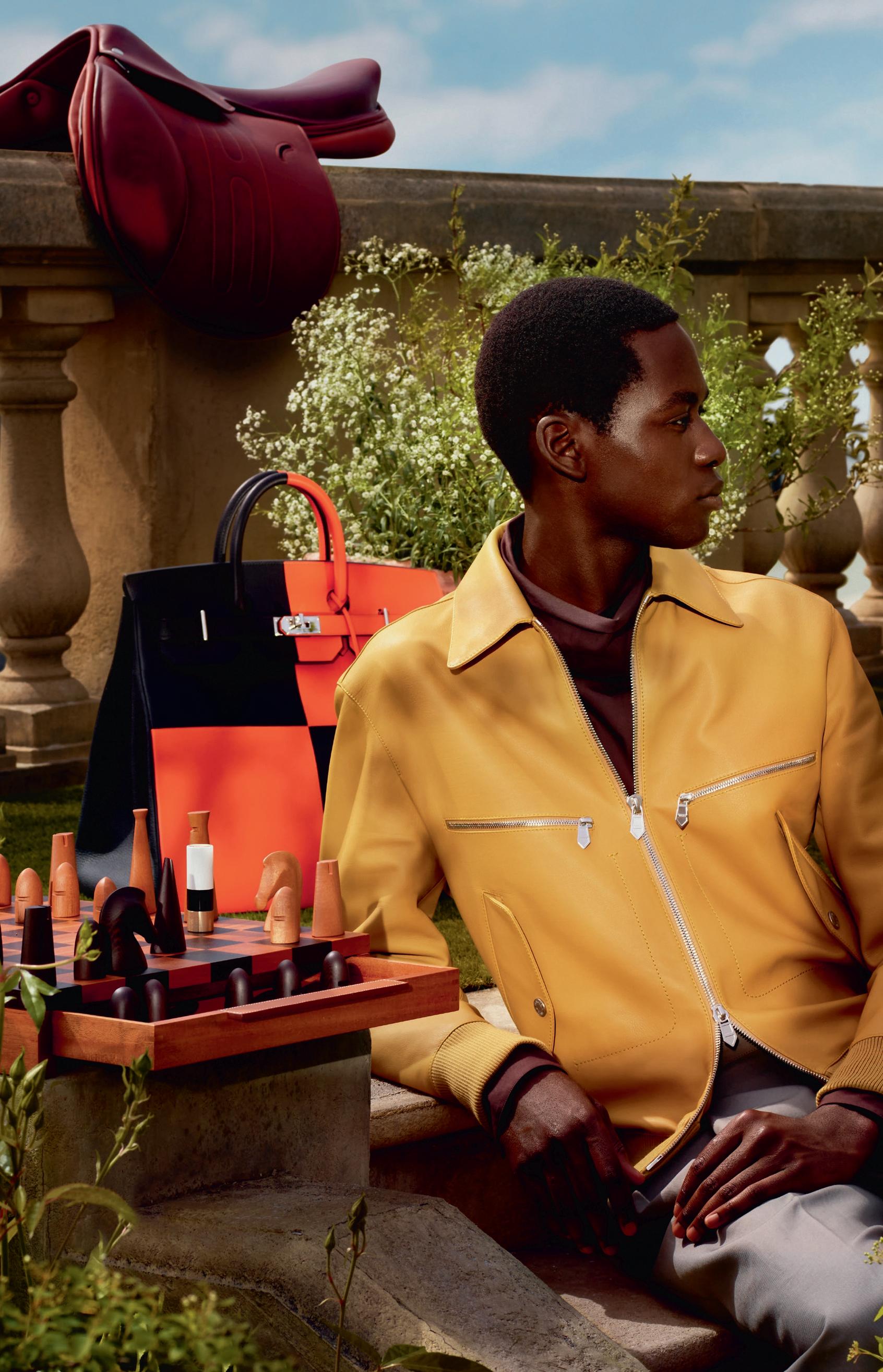
Thierry Fischer
THIERRY FISCHER HAS BEEN music director of both the Utah Symphony since 2009 and the São Paulo Symphony since 2020, and he takes up the same post with Spain’s Orquesta Sinfónica de Castilla y León in September 2022.
In recent seasons, he has conducted orchestras across the globe, notably The Cleveland Orchestra, as well as the Boston, Atlanta, and Cincinnati Symphony Orchestras; London Philharmonic, Royal Philharmonic, Oslo Philharmonic, Rotterdam Philharmonic, Maggio
Musicale Fiorentino, and others.
Highlights of his 2022 São Paulo season include a Strauss series and the start of a Sibelius cycle, as well as works by Swiss composers Dieter Ammann, Frank Martin, and Heinz Holliger. In his first season with Orquesta Sinfónica de Castilla y León, Mr. Fischer conducts repertoire ranging from Haydn to Bruckner, Mahler, Brahms, Stravinsky, and Florence Price, and participates in a special project with Brass for Africa.

Mr. Fischer closes his tenure in Utah this season with Mahler’s Third Symphony, featuring the women of the Tabernacle Choir. In his farewell season, he will also celebrate Messiaen’s music with a performance of Turangalîla Symphony and the release of a recording of Des Canyons aux Étoiles (Hyperion, 2023), which was inspired by Utah’s awesome landscape. Mr. Fischer will become Utah Symphony’s music director emeritus in summer 2023.
Mr. Fischer’s career in classical music started as principal flute in Hamburg and at the Zurich Opera. He began conducting in his 30s when he replaced an ailing colleague. This led to his first concerts with the Chamber Orchestra of Europe, where he was principal flute under Claudio Abbado. He spent his apprentice years in Holland and became principal conductor and artistic advisor to the Ulster Orchestra (2001–06). From 2006–12, he was principal conductor of the BBC National Orchestra of Wales. He was principal guest conductor of the Seoul Philharmonic (2017–20) and chief conductor of the Nagoya Philharmonic (2008–11), where he is now an honorary guest conductor.
THE CLEVELAND ORCHESTRA | 17clevelandorchestra.comPHOTO BY MARCO BORGGREVE THE CONDUCTOR
Vilde Frang, violin
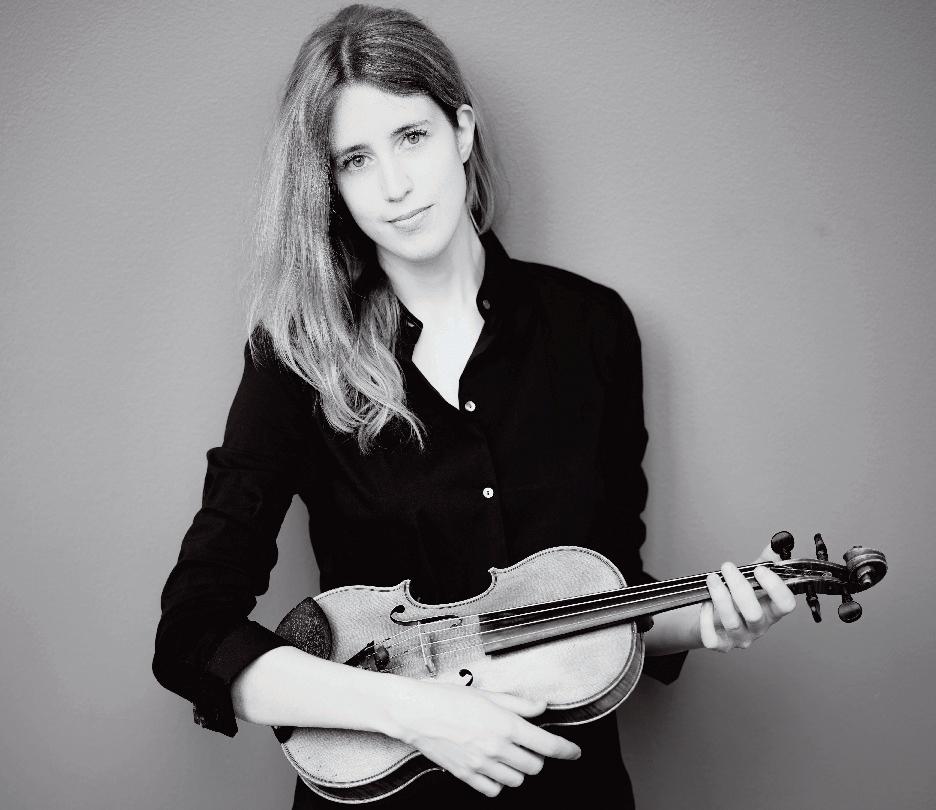
Harding, Vladimir Jurowski, David Zinman, Philippe Herreweghe, Esa-Pekka Salonen, Yuri Temirkanov, and Sir Simon Rattle.
VILDE FRANG WAS unanimously awarded the Credit Suisse Young Artist Award in 2012 and made her debut with the Vienna Philharmonic under Bernard Haitink at the Lucerne Festival.
Highlights among her recent and forthcoming solo engagements include performances with Berlin Philharmonic, London Symphony, Concertgebouw Orchestra, Gewandhausorchester Leipzig, Symphonie orchester des Bayerischen Rundfunks, Budapest Festival Orchestra, Chamber Orchestra of Europe, Orchestre de Paris, Tonhalle-Orchester Zürich, Santa Cecilia Orchestra, St. Petersburg Philharmonic, Chicago Symphony, Los Angeles Philharmonic, The Cleveland Orchestra, Israel Philharmonic, Sydney Symphony, and the NHK Symphony in Tokyo, with conductors such as Valery Gergiev, Iván Fischer, Manfred Honeck, Zubin Mehta, Mariss Jansons, Teodor Currentzis, Herbert Blomstedt, Daniel
She regularly appears at festivals in Salzburg, Verbier, Lucerne, Rheingau, Mecklenburg-Vorpommern, and Lockenhaus, as well as the BBC Proms, Mostly Mozart Festival, Prague Spring Music Festival, and George Enescu Festival in Bucharest. As a soloist and in recital, Ms. Frang has performed at venues such as the Concertgebouw, Musikverein, Wigmore Hall, Royal Albert Hall, Tonhalle Zürich, Bozar Brussels, Rudolfinum, Tchaikovsky Hall, and Carnegie Hall, and has been presented by the Vancouver Recital Series, Boston Celebrity Series, and San Francisco Performances.
An exclusive Warner Classics artist, Ms. Frang’s recordings have received the Grand Prix du Disque, Edison Klassiek Award, Deutsche Schallplattenpreis, Diapason d’Or, and Gramophone Award.
Born in Norway in 1986, she made her debut with the Oslo Philharmonic Orchestra at age 12 under Mariss Jansons. She studied at Barratt Due Musikkinstitutt in Oslo, with Kolja Blacher at Musikhochschule Hamburg, and Ana Chumachenco at the Kronberg Academy. She has worked with Mitsuko Uchida as a 2007 BorlettiBuitoni Trust Fellowship winner and was a scholarship holder from 2003–09 in the Anne-Sophie Mutter Foundation.
Vilde Frang plays the 1734 “Rode” Guarnerius, on generous loan by a European benefactor.
18 | 2022/2023 SEASON
TOP
LEFT: PHOTO BY MARCO BORGGREVE
| TOP
RIGHT: PHOTO BY SAM HUBISH
THE ARTISTS
INTERNATIONALLY REGARDED as one of today’s finest concert organists, Todd Wilson is head of the Organ Department at the Cleveland Institute of Music, director of music at Trinity Episcopal Cathedral in Cleveland, Ohio, and

curator of the Norton Memorial Organ at Cleveland’s Severance Music Center. Mr. Wilson has been heard in recital at major venues throughout the United States, Europe, and Japan, and has appeared with symphony orchestras around the world. He has recordings on Raven, Naxos, JAV, Delos, Gothic, Disques du Solstice, and other private labels, and has served on the jury for prestigious competitions, including the St. Albans International Organ Competition (U.K.) and the Longwood Gardens International Organ Competition (U.S.). He served as visiting professor of organ at the University of Michigan for the 2021–22 academic year.
Mr. Wilson holds the Fellow and Choirmaster certificates from the American Guild of Organists and has been a featured recitalist at many Guild conventions. Additionally, he enjoys performing improvised accompaniments to classic silent films.
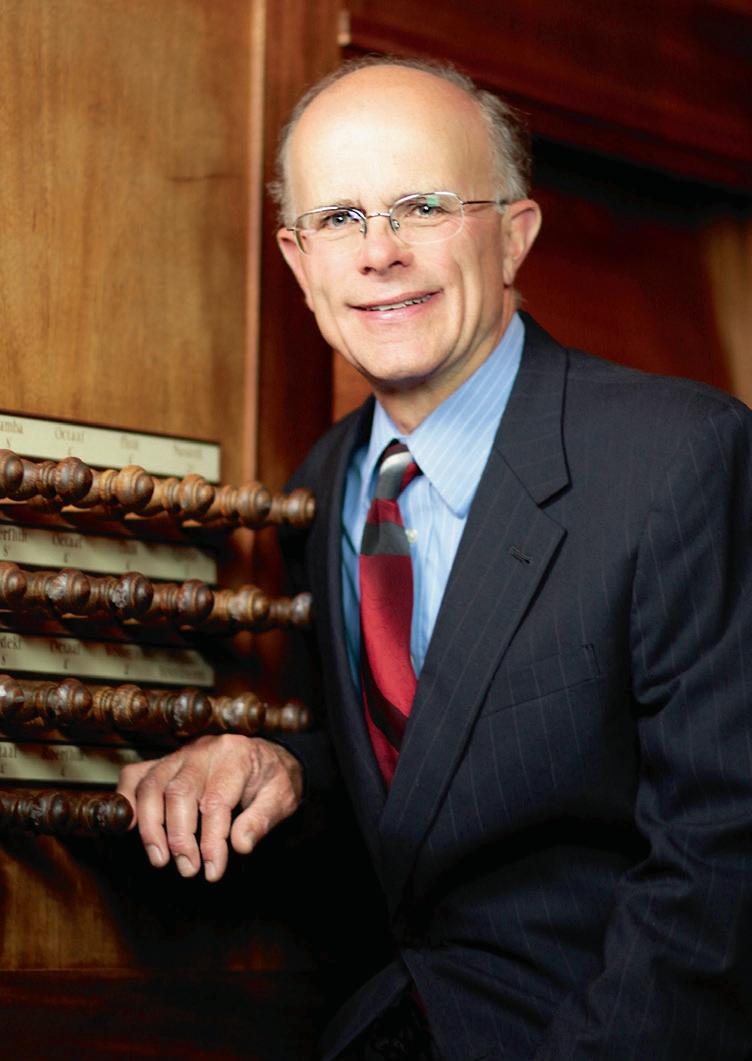 Todd Wilson, organ
Todd Wilson, organ
Adella, our streaming service and app, features on-demand portraits, music showcases, behind-the-scenes footage and our flagship In Focus premium concert series, which launches Season 3 on October 7. THE CLEVELAND ORCHESTRA ANYTIME & ANYWHERE Visit Adella.live to start your free trial.
NOW IN ITS SECOND CENTURY , The Cleveland Orchestra, under the leadership of music director Franz Welser-Möst since 2002, is one of the most sought-after performing ensembles in the world. Year after year, the ensemble exemplifies extraordinary artistic excellence, creative programming, and community engagement. The New York Times has called Cleveland “the best in America” for its virtuosity, elegance of sound, variety of color, and chamber-like musical cohesion.
Founded by Adella Prentiss Hughes, the Orchestra performed its inaugural concert in December 1918. By the middle of the century, decades of growth and sustained support had turned it into one of the most admired globally.
The past decade has seen an increasing number of young people attending concerts, bringing fresh attention to The Cleveland Orchestra’s legendary sound and committed programming. More recently, the Orchestra launched several bold digital projects, including the streaming broadcast series In Focus, the podcast On a Personal Note, and its own recording label, a new chapter in the Orchestra’s long and distinguished recording and broadcast history. Together, they have captured the Orchestra’s unique artistry and the musical achievements of the Welser-Möst and Cleveland Orchestra partnership.

The 2022/23 season marks Franz Welser-Möst’s 21st year as music director, a period in which The Cleveland Orchestra earned unprecedented acclaim around the world, including a series of residencies at the Musikverein in Vienna, the first of its kind by an American orchestra, and a number of acclaimed opera presentations.
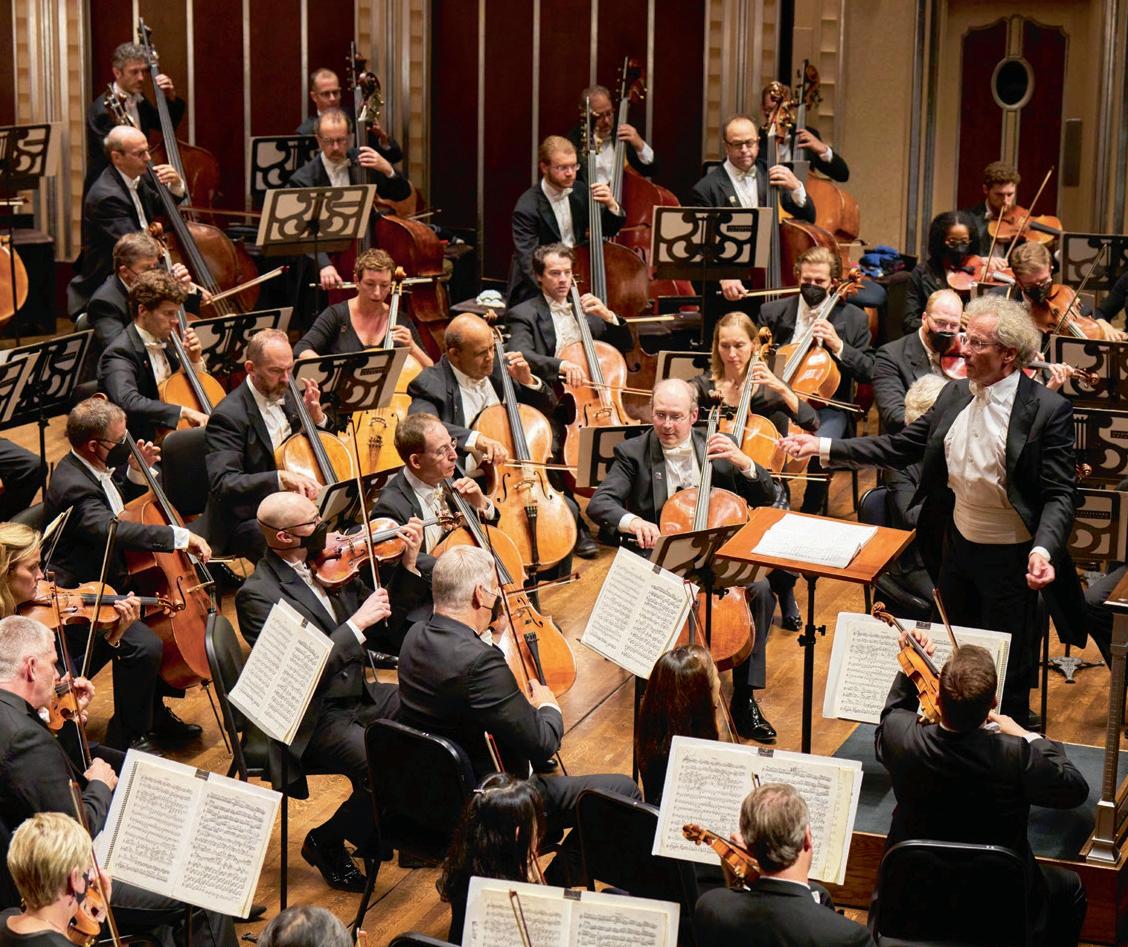
Since 1918, seven music directors — Nikolai Sokoloff, Artur Rodziński, Erich Leinsdorf, George Szell, Lorin Maazel, Christoph von Dohnányi, and Franz Welser-Möst — have guided and shaped the ensemble’s growth and sound. Through concerts at home and on tour, broadcasts, and a catalog of acclaimed recordings, The Cleveland Orchestra is heard today by a growing group of fans around the world.
ROGER
20 | 2022/2023 SEASON THE CLEVELAND ORCHESTRA
@ClevelandOrchestra @clevelandorchestra@CleveOrchestra@Cleveorch PHOTO BY
MASTROIANNI


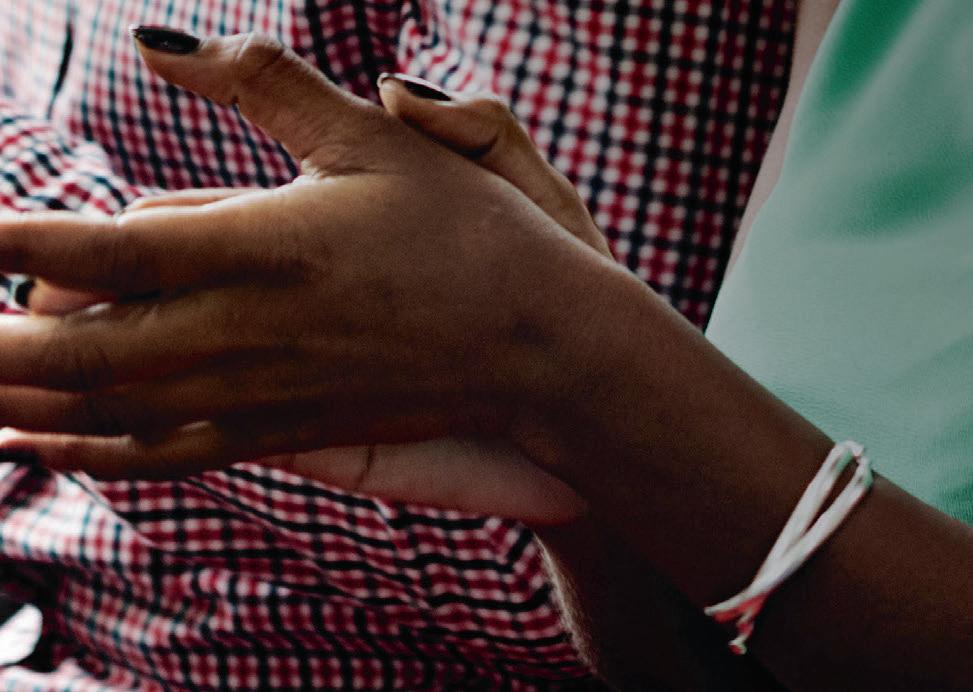

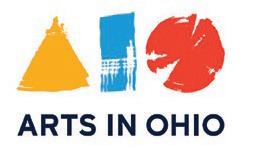



WHERE WILL THE ARTS TAKE YOU NEXT ? VISIT ARTSINOHIO.COM @OHIOARTSCOUNCIL | #ARTSOHIO | OAC.OHIO.GOV State and federal dollars through the Ohio Arts Council supported your arts experience today.
FIRST VIOLINS
Peter Otto
FIRST ASSOCIATE CONCERTMASTER
Virginia M. Lindseth, PhD, Chair
Jung-Min Amy Lee ASSOCIATE CONCERTMASTER Gretchen D. and Ward Smith Chair
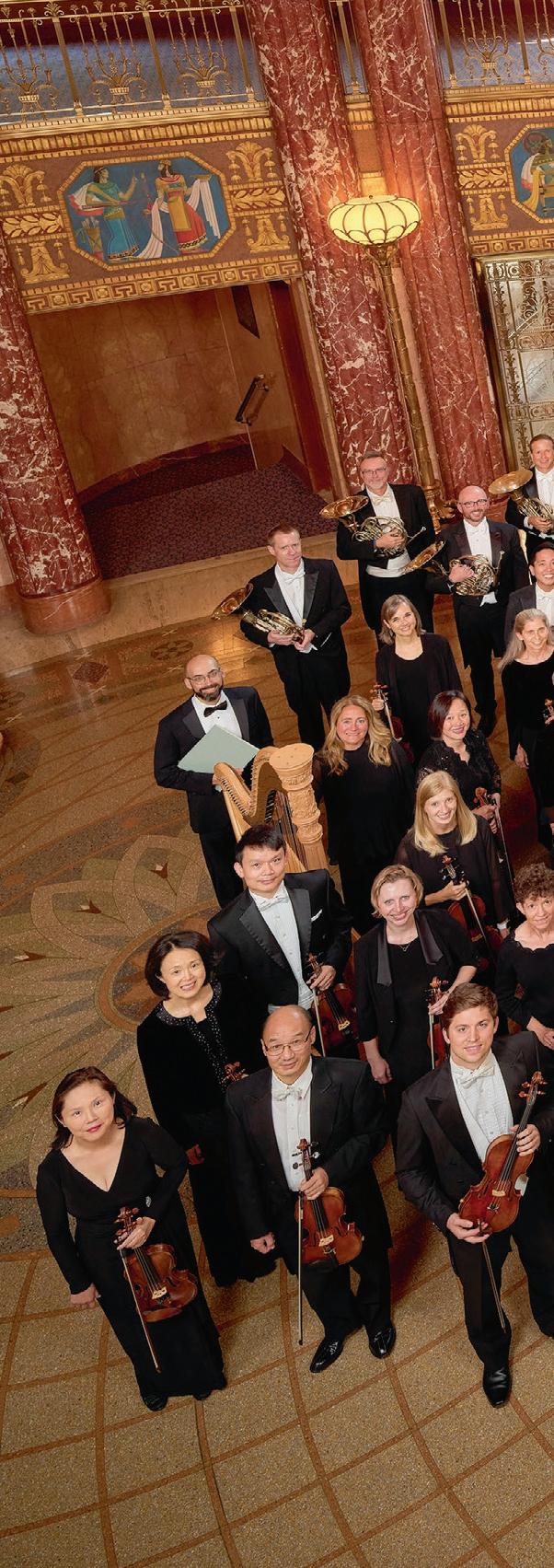
Jessica Lee ASSISTANT CONCERTMASTER
Clara G. and George P. Bickford Chair
Stephen Tavani ASSISTANT CONCERTMASTER
Wei-Fang Gu Drs. Paul M. and Renate H. Duchesneau Chair
Kim Gomez Elizabeth and Leslie Kondorossy Chair
Chul-In Park Harriet T. and David L. Simon Chair
Miho Hashizume Theodore Rautenberg Chair
Jeanne Preucil Rose Larry J.B. and Barbara S. Robinson Chair
Alicia Koelz Oswald and Phyllis Lerner Gilroy Chair
Yu Yuan Patty and John Collinson Chair
Isabel Trautwein Trevor and Jennie Jones Chair
Katherine Bormann
Analisé Denise Kukelhan Gladys B. Goetz Chair Zhan Shu
SECOND VIOLINS
Stephen Rose* Alfred M. and Clara T. Rankin Chair
Eli Matthews1 Patricia M. Kozerefski and Richard J. Bogomolny Chair
Sonja Braaten Molloy Carolyn Gadiel Warner
Elayna Duitman Ioana Missits
Jeffrey Zehngut Vladimir Deninzon
Sae Shiragami Scott Weber Kathleen Collins Beth Woodside Emma Shook Dr. Jeanette Grasselli Brown and Dr. Glenn R. Brown Chair
Yun-Ting Lee Jiah Chung Chapdelaine
VIOLAS
Wesley Collins* Chaillé H. and Richard B. Tullis Chair
Lynne Ramsey1 Charles M. and Janet G. Kimball Chair Stanley Konopka2 Mark Jackobs Jean Wall Bennett Chair Lisa Boyko Richard and Nancy Sneed Chair
Richard Waugh Lembi Veskimets
The Morgan Sisters Chair Eliesha Nelson Joanna Patterson Zakany
William Bender Gareth Zehngut
CELLOS
Mark Kosower* Louis D. Beaumont Chair Richard Weiss1 The GAR Foundation Chair Charles Bernard2 Helen Weil Ross Chair Bryan Dumm Muriel and Noah Butkin Chair
Tanya Ell Thomas J. and Judith Fay Gruber Chair
Ralph Curry
Brian Thornton William P. Blair III Chair David Alan Harrell Martha Baldwin Dane Johansen
Paul Kushious
BASSES
Maximilian Dimoff* Clarence T. Reinberger Chair
Derek Zadinsky2 Mark Atherton Thomas Sperl Henry Peyrebrune Charles Barr Memorial Chair
Charles Carleton Scott Dixon Charles Paul HARP
Trina Struble* Alice Chalifoux Chair
FLUTES
Joshua Smith* Elizabeth M. and William C. Treuhaft Chair Saeran St. Christopher Jessica Sindell2 Austin B. and Ellen W. Chinn Chair
Mary Kay Fink
PICCOLO
Mary Kay Fink Anne M. and M. Roger Clapp Chair
OBOES
Frank Rosenwein* Edith S. Taplin Chair Corbin Stair Sharon and Yoash Wiener Chair
Jeffrey Rathbun2 Everett D. and Eugenia S. McCurdy Chair
Robert Walters
ENGLISH HORN
Robert Walters Samuel C. and Bernette K. Jaffe Chair
CLARINETS
Afendi Yusuf* Robert Marcellus Chair
Robert Woolfrey Victoire G. and Alfred M. Rankin, Jr. Chair
Daniel McKelway2 Robert R. and Vilma L. Kohn Chair
Amy Zoloto
E-FLAT CLARINET
Daniel McKelway Stanley L. and Eloise M. Morgan Chair
BASS CLARINET
Amy Zoloto Myrna and James Spira Chair
BASSOONS
John Clouser* Louise Harkness Ingalls Chair
Gareth Thomas
Barrick Stees2 Sandra L. Haslinger Chair
Jonathan Sherwin
CONTRABASSOON
Jonathan Sherwin
HORNS
Nathaniel Silberschlag* George Szell Memorial Chair
22 | 2022/2023 SEASON
Franz Welser-Möst, MUSIC DIRECTOR Kelvin Smith Family Chair
THE CLEVELAND ORCHESTRA
PHOTO BY ROGER MASTROIANNI
Michael Mayhew§
Foundation
McCormick
Robert B. Benyo Chair
Hans Clebsch
Richard King
TRUMPETS
Michael Sachs* Robert and Eunice Podis Weiskopf Chair
Jack Sutte
Lyle Steelman2 James P. and Dolores D. Storer Chair
Michael Miller
CORNETS
Michael Sachs*
Mary Elizabeth and G. Robert Klein
Michael Miller
TROMBONES
Brian Wendel* Gilbert W. and Louise I.
Richard Stout Alexander and Marianna C. McAfee Chair
Shachar Israel2
Richard Stout
TUBA
Yasuhito Sugiyama* Nathalie C. Spence and Nathalie S. Boswell Chair
TIMPANI
Paul
G. and Corinne T. Voss
PERCUSSION
Marc Damoulakis*
Margaret Allen Ireland
Donald Miller
Thomas Sherwood
KEYBOARD INSTRUMENTS
Carolyn Gadiel Warner Marjory and Marc L. Swartzbaugh Chair
LIBRARIANS
Michael Ferraguto Joe and Marlene Toot Chair
Donald Miller
ENDOWED CHAIRS
CONDUCTORS
Christoph von Dohnányi
Reith
Sidney and Doris Dworkin
Lisa Wong
P. and Chester C. Bolton Chair
Elizabeth Ring and William Gwinn Mather Chair
Blossom-Lee Chair Paul and Lucille Jones Chair
James and Donna Reid Chair
Mary E. and F. Joseph Callahan Chair
Sunshine Chair
Mr. and Mrs. Richard K. Smucker Chair
Rudolf Serkin Chair
This roster lists full-time members of The Cleveland Orchestra. The number and seating of musicians onstage varies depending on the piece being performed. Seating within the string sections rotates on a periodic basis.

THE CLEVELAND ORCHESTRA | 23clevelandorchestra.com
Knight
Chair Jesse
Chair
Humphrey Chair
MUSIC DIRECTOR LAUREATE Daniel
ASSISTANT CONDUCTOR
Chair
DIRECTOR OF CHORUSES Frances
* Principal § Associate Principal 1 First Assistant Principal 2 Assistant Principal
EUPHONIUM & BASS TRUMPET
Yancich* Otto
Chair
Chair
CURRENTLY UNOCCUPIED
What do world-class musicians, a globally renowned conductor, and the acoustic and architectural magnificence of Severance have in common? You. The audience we play for, and are simply not the same without. Your unbridled enthusiasm inspires us all to reach the greatest of heights in every performance. We invite you to once again be part of the wonder that is The Cleveland Orchestra: live and in person. All because of you.

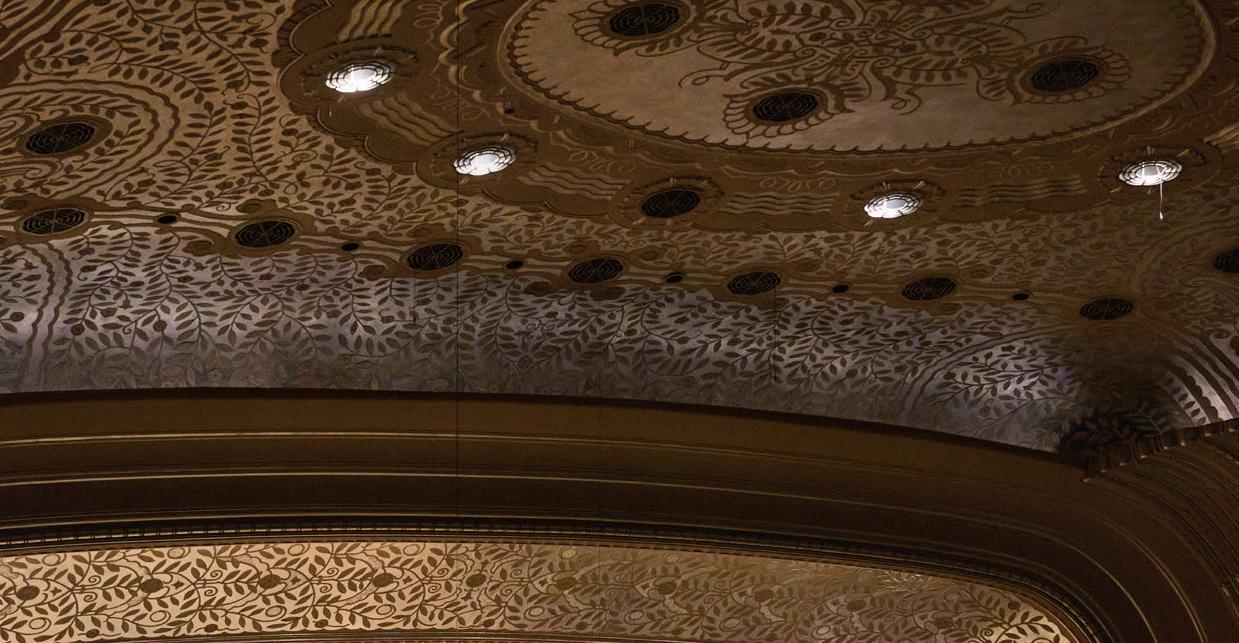




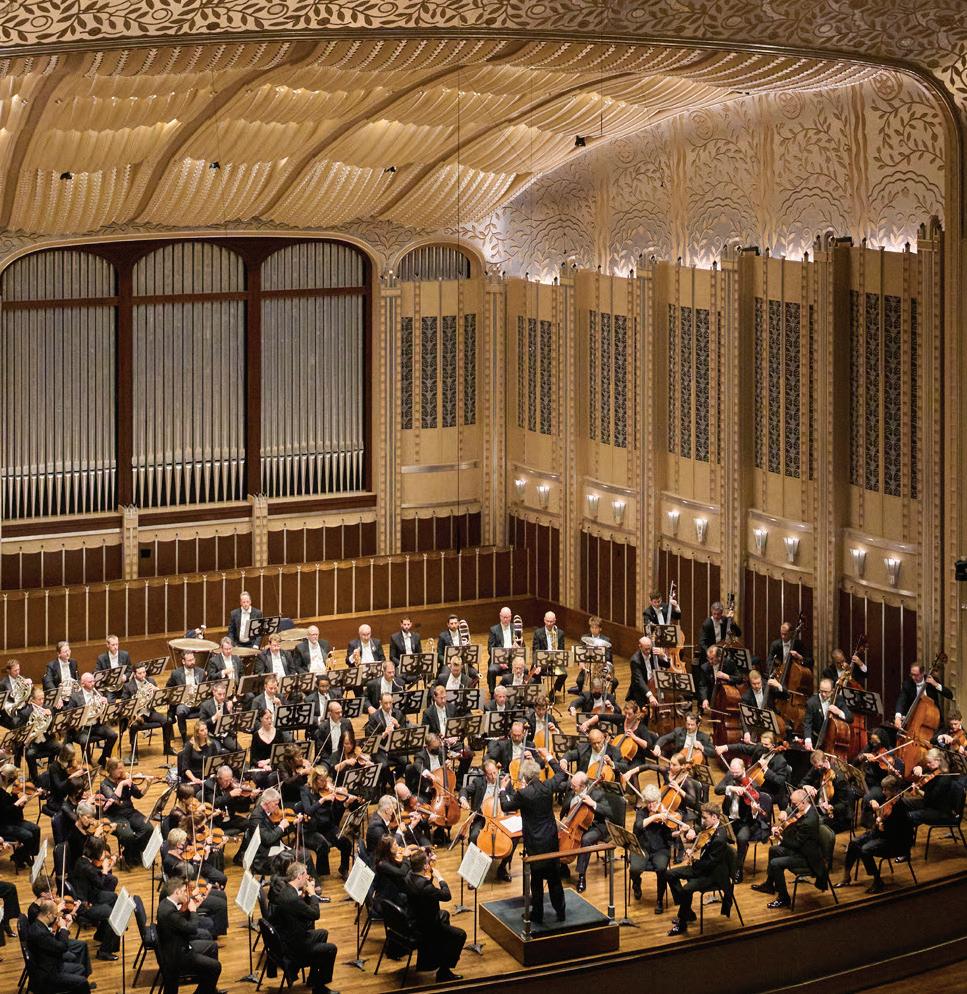

Curated packages for as few as three concerts starting at just $66.
Enjoy each concert from the same seats — yours to renew year after year — and it’s our best value at savings of up to 35% off single-ticket prices. If your schedule changes, take advantage of FREE and easy ticket exchanges. Select a concert series and seating preference that fits your schedule and budget.

See more concerts you want? Save 20% on any additional classical concert tickets.


Save up to 25% off singleticket prices when you choose 4 concerts or more.
Build a Create Your Own series that perfectly fits your concertgoing lifestyle. Simply choose your favorite concerts, select your dates, then reserve your seats.
Your all-access pass to concerts at Severance Music Center and Blossom Music Festival.
For a monthly fee of $35, you can purchase tickets for just $10. When you buy as few as five tickets, you save over singleticket prices.
Choose from over 100
concerts a year! subscriptions@clevelandorchestra.com | 216-231-1111 clevelandorchestra.com/subscribe 1 Premier 2Create YourOwn 3 Please Join us! SUBSCRIBERS ARE VITAL SUPPORTERS OF THE CLEVELAND ORCHESTRA Member’s C lub The best seats and the best savings. Your schedule and your choices. The most flexibility. Free and easy ticket exchanges The opportunity to purchase advance parking 10% off at The Cleveland Orchestra Store Advance notice on concert announcements & offers Free subscription to Spotlight magazine Free access to In Focus, our digital concert series, with behind-the-scenes interviews and features Free access to Adella Premium streaming service & app Money-back guarantee SUBSCRIBE TODAY! Make your choice from three great subscription options and enjoy exclusive benefits throughout the season.
Don’t miss a moment
FALL WINTER
SEP 29, 30
MAHLER’S RESURRECTION
Franz Welser-Möst, conductor
Lauren Snouffer, soprano Marie-Nicole Lemieux, contralto Cleveland Orchestra Chorus
MAHLER Symphony No. 2 (“Resurrection”)
OCT 7, 8
SAINT-SAËNS ORGAN SYMPHONY
Thierry Fischer, conductor
Vilde Frang, violin BOULEZ Notations
STRAVINSKY Violin Concerto SAINT-SAËNS Symphony No. 3 (“Organ”)
OCT 13, 14, 15, 16
BEETHOVEN’S EROICA
Nikolaj Szeps-Znaider, conductor Mark Kosower, cello*
AL-ZAND Lamentation on The Disasters of War
BLOCH Schelomo, Hebraic Rhapsody for Cello and Orchestra*
BEETHOVEN Symphony No. 3 (“Eroica”)
* not part of Friday Matinee concert
OCT 20, 22
AN ALPINE SYMPHONY
Daniel Harding, conductor
Antoine Tamestit, viola
WIDMANN Viola Concerto
STRAUSS Eine Alpensinfonie
OCT 27, 28, 29
GERSTEIN PLAYS SCHUMANN
Edward Gardner, conductor Kirill Gerstein, piano
BENJAMIN Ringed by a Flat Horizon SCHUMANN Piano Concerto DVOŘÁK Symphony No. 7
NOV 17, 18, 19
EL NIÑO
John Adams, conductor Lauren Snouffer, soprano Josefina Maldonado, mezzo-soprano Davóne Tines, bass-baritone
Daniel Bubeck, countertenor Brian Cummings, countertenor Nathan Medley, countertenor Cleveland Orchestra Chorus Cleveland Orchestra Children’s Chorus
ADAMS El Niño
NOV 25, 26, 27
THE FIREBIRD
Thomas Søndergård, conductor Stefan Jackiw, violin BRITTEN Violin Concerto No. 1 STRAVINSKY The Firebird (complete ballet)
DEC 1, 2, 3
ELGAR AND WALTON
Vasily Petrenko, conductor Behzod Abduraimov, piano*
ELGAR Cockaigne (“In London Town”)
PROKOFIEV Piano Concerto No. 2* WALTON Symphony No. 1 * not part of Friday Matinee concert
JAN 5, 7
NIELSEN AND HAYDN
Alan Gilbert, conductor
Paul Yancich, timpani Liv Redpath, soprano Justin Austin, baritone
OLIVERIO Timpani Concerto HAYDN Symphony No. 90 NIELSEN Symphony No. 3 (“Sinfonia espansiva”)
JAN 12, 13, 14
WELSER-MÖST CONDUCTS SCHUBERT
Franz Welser-Möst, conductor Joélle Harvey, soprano Daryl Freedman, mezzo-soprano Julian Prégardien, tenor Martin Mitterrutzner, tenor Dashon Burton, bass-baritone Cleveland Orchestra Chorus BERG Lyric Suite*
SCHUBERT Symphony No. 8* (“Unfinished”)
SCHUBERT Mass No. 6
* The movements of the Lyric Suite will be performed in rotation with Symphony No. 8
FEB 2, 3, 4, 5
BOLÉRO
Klaus Mäkelä, conductor
Truls Mørk, cello
SALONEN Cello Concerto DEBUSSY Images
RAVEL Boléro
clevelandorchestra.com CALENDAR
of unforgettable music!
FEB 9, 11
MAHLER’S FIFTH
Klaus Mäkelä, conductor
CHIN SPIRA—Concerto for Orchestra
MAHLER Symphony No. 5
FEB 16, 17, 18
BEETHOVEN’S SEVENTH
Herbert Blomstedt, conductor Emanuel Ax, piano
MOZART Piano Concerto No. 18 (“Paradis”)
BEETHOVEN Symphony No. 7
FEB 23, 24, 25
MOZART AND STRAUSS
Franz Welser-Möst, conductor MOZART Divertimento No. 2* SCHOENBERG Variations for Orchestra
STRAUSS Ein Heldenleben * not part of Friday Matinee concert
MAR 2, 3, 4, 5
PICTURES AT AN EXHIBITION
Franz Welser-Möst, conductor Víkingur Ólafsson, piano
FARRENC Symphony No. 3
RAVEL Piano Concerto in G major MUSSORGSKY/RAVEL Pictures at an Exhibition
MAR 9, 10, 11, 12
MOZART’S REQUIEM
Franz Welser-Möst, conductor Christoph Sietzen, percussion Siobhan Stagg, soprano Avery Amereau, alto Ben Bliss, tenor Anthony Schneider, bass Cleveland Orchestra Chorus
STAUD Concerto for Percussion MOZART Requiem
SPRING
MAR 30, 31, & APR 1
INSPIRATION: THE TEMPEST
Thomas Adès, conductor Pekka Kuusisto, violin
ADÈS Tempest Suite ADÈS Märchentänze
SIBELIUS Six Humoresques* SIBELIUS Prelude and Suite No. 1 from The Tempest*
* Certain selections will not be part of the Friday Matinee concert
APR 6, 7, 8
SHOSTAKOVICH’S FIFTH SYMPHONY
Rafael Payare, conductor Jean-Yves Thibaudet, piano
BERNSTEIN Symphony No. 2 (“The Age of Anxiety”)
SHOSTAKOVICH Symphony No. 5
APR 13, 15, 16
MAHLER’S TITAN
Michael Tilson Thomas, conductor Leif Ove Andsnes, piano
DEBUSSY Jeux, poème dansé DEBUSSY Fantaisie for Piano and Orchestra
MAHLER Symphony No. 1 (“Titan”)
APR 20, 21, 22, 23
ALL MOZART
Bernard Labadie, conductor Lucy Crowe, soprano
MOZART Overture to La clemenza di Tito MOZART “Giunse al fin il momento... Al desio di chi t’adora” MOZART Ruhe Zanft from Zaide MOZART Masonic Funeral Music MOZART “Venga la morte... Non temer, amato bene” MOZART Symphony No. 41 (“Jupiter”)
APR 27, 28, 29
MARSALIS AND NEW WORLD
Franz Welser-Möst, conductor Michael Sachs, trumpet MARTINŮ Symphony No. 2 MARSALIS Trumpet Concerto DVOŘÁK Symphony No. 9 (“From the New World”)
MAY 4, 6
WEILERSTEIN PLAYS
BARBER
Franz Welser-Möst, conductor Alisa Weilerstein, cello LOGGINS-HULL Can You See? BARBER Cello Concerto PROKOFIEV Symphony No. 4
MAY 14, 17, 20
THE GIRL OF THE GOLDEN WEST
Franz Welser-Möst, conductor Tamara Wilson, soprano (Minnie) Eric Owens, bass (Jack Rance) Fabio Sartori, tenor (Dick Johnson) Cleveland Orchestra Chorus PUCCINI La Fanciulla del West (The Girl of the Golden West) * Opera presentation, sung in Italian with projected supertitles
HEALTH & SAFETY
The Cleveland Orchestra is committed to creating a comfortable, enjoyable, and safe environment for all guests at Severance Music Center. While mask and COVID-19 vaccination are recommended they are not required. Protocols are reviewed regularly with the assistance of our Cleveland Clinic partners; for up-to-date information, visit: clevelandorchestra. com/attend/health-safety
LATE SEATING
As a courtesy to the audience members and musicians in the hall, late-arriving patrons are asked to wait quietly until the first convenient break in the program. These seating breaks are at the discretion of the House Manager in consultation with the performing artists.
PAGERS, CELL PHONES & WRISTWATCH ALARMS
PHOTOGRAPHY, VIDEOGRAPHY & RECORDING
IN THE EVENT OF AN EMERGENCY
Contact an usher or a member of house staff if you require medical assistance. Emergency exits are clearly marked throughout the building. Ushers and house staff will provide instructions in the event of an emergency.
AGE RESTRICTIONS
HEARING AIDS & OTHER HEALTH-ASSISTIVE DEVICES
For In-
House Manager or
Usher
more details.
Regardless of age, each person must have a ticket and be able to sit quietly in a seat throughout the performance. Classical season subscription concerts are not recommended for children under the age of 8. However, there are several age-appropriate series designed specifically for children and youth, including Music Explorers (for 3 to 6 years old) and Family Concerts (for ages 7 and older).
The Cleveland Orchestra is grateful to the following organizations for their ongoing generous support of The Cleveland Orchestra: National Endowment for the Arts, the State of Ohio and Ohio Arts Council, and to the residents of Cuyahoga County through Cuyahoga Arts and Culture.
The Cleveland Orchestra is proud of its long-term partnership with Kent State University, made possible in part through generous funding from the State of Ohio. The Cleveland Orchestra is proud to have its home, Severance Music Center, located on the campus of Case Western Reserve University, with whom it has along history of collaboration and partnership.
© 2022 The Cleveland Orchestra and the Musical Arts Association Program books for Cleveland Orchestra concerts are produced by The Cleveland Orchestra and are distributed free to attending audience members.
EDITOR Amanda Angel Managing Editor of Content aangel@clevelandorchestra.com
DESIGN Elizabeth Eddins, eddinsdesign.com ADVERTISING Live Publishing Company, 216-721-1800
28 | 2022/2023 SEASON YOUR VISIT
Download today for instant, secure and paperless access to your concert tickets. For more information and direct links to download, visit clevelandorchestra.com/ticketwallet or scan the code with your smartphone camera to download the app for iPhone or Android. Available for iOS and Android on Google Play and at the Apple App Store.
As a courtesy to others, please silence all devices prior to the start of the concert.
Audio recording, photography, and videography are prohibited during performances at Severance. Photographs can only be taken when the performance is not in progress.
For the comfort of those around you, please reduce the volume on hearing aids and other devices that may produce a noise that would detract from the program.
frared Assistive-Listening Devices, please see the
Head
for
clevelandorchestra.com Cleveland Orchestra performances are broadcast as part of regular programming on ideastream/WCLV Classical 104.9 FM, Saturdays at 8 p.m. and Sundays at 4 p.m. FREE MOBILE APP TICKET WALLET

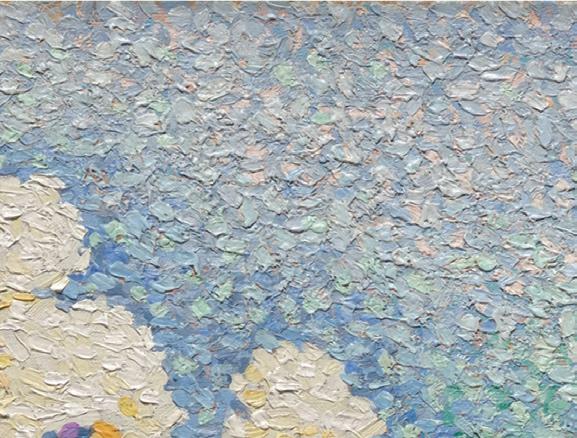
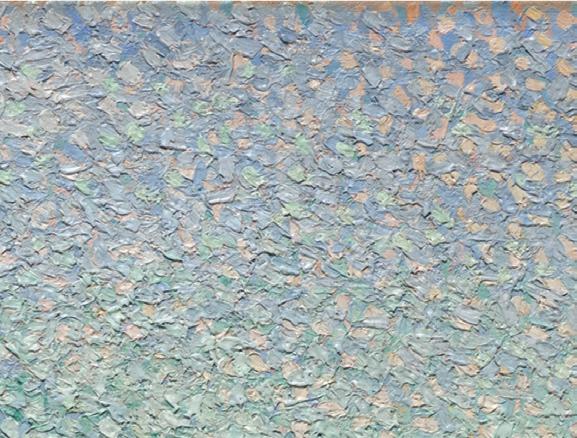
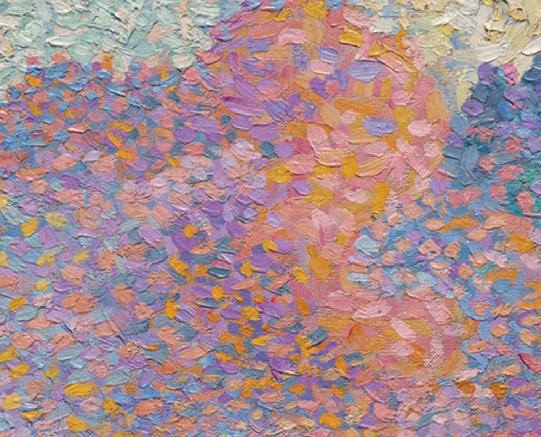

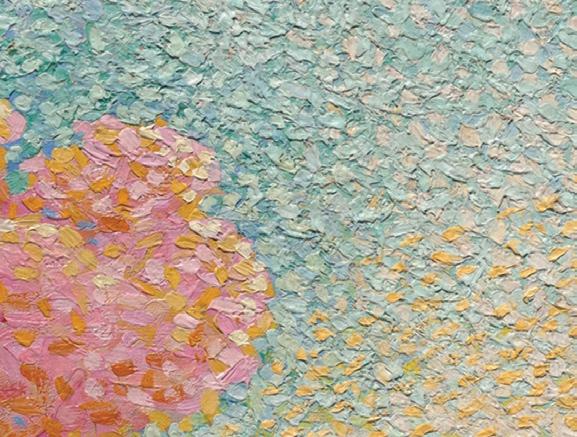

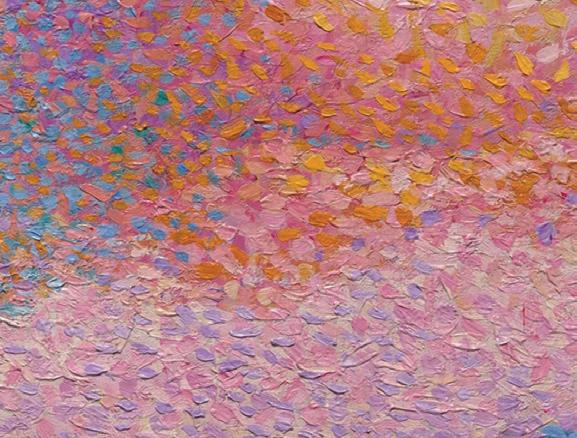
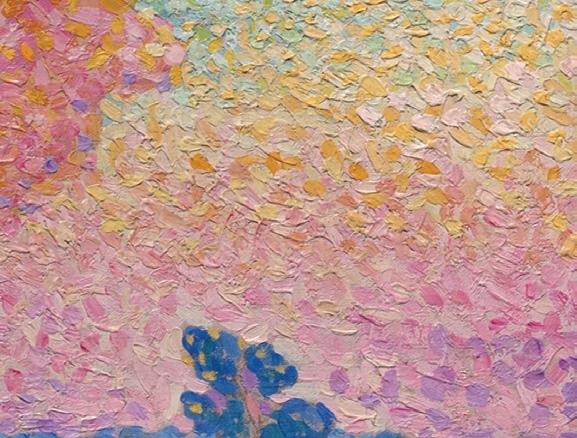




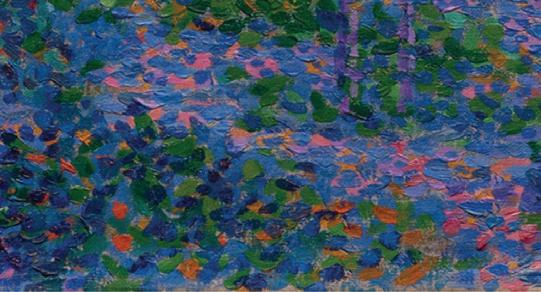


PHOTO CREDITS XXXX Beyond impressive. IMPRESSIONISM to MODERNISM the Keithley Collection Open Now | Tickets at cma.org | CMA Members FREE See this extraordinary collection of more than 100 masterworks—the largest gift of art to the museum in more than 60 years—together for the first and only time. The Cleveland Museum of Art is funded in part by residents of Cuyahoga County through a public grant from Cuyahoga Arts & Culture. This exhibition was supported in part by the Ohio Arts Council, which receives support from the State of Ohio and the National Endowment for the Arts. Henri-Edmond Cross (French, 1856–1910). The Pink Cloud, c. 1896. Oil on canvas; 54.6 x 61 cm. Nancy F. and Joseph P. Keithley Collection Gift, 2020.106
A SYMPHONY OFSuccess

We believe that all Cleveland youth should have access to high-quality arts education. Through the generosity of our donors, we are investing to scale up neighborhood-
based programs that now serve 3,000 youth year-round in music, dance, theater, photography, literary arts and curatorial mastery. That’s a symphony of success. Find your passion, and partner with the Cleveland Foundation to make your greatest charitable impact.
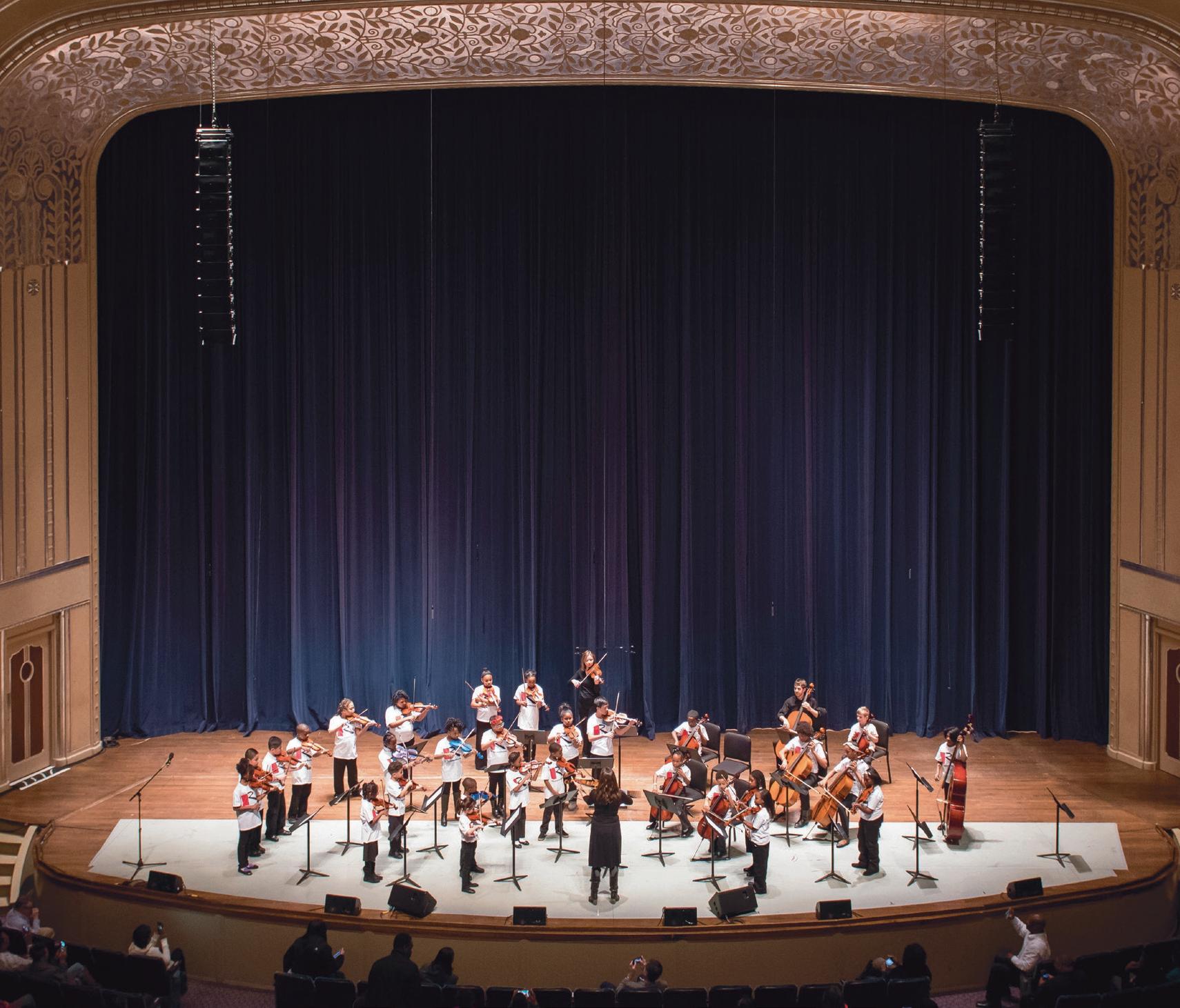
(877)554-5054 w ww.ClevelandFoundation.org
Rainey
Institute El Sistema Orchestra
















 E. Rodda
E. Rodda



 BY ROGER
BY ROGER





















 Todd Wilson, organ
Todd Wilson, organ







































